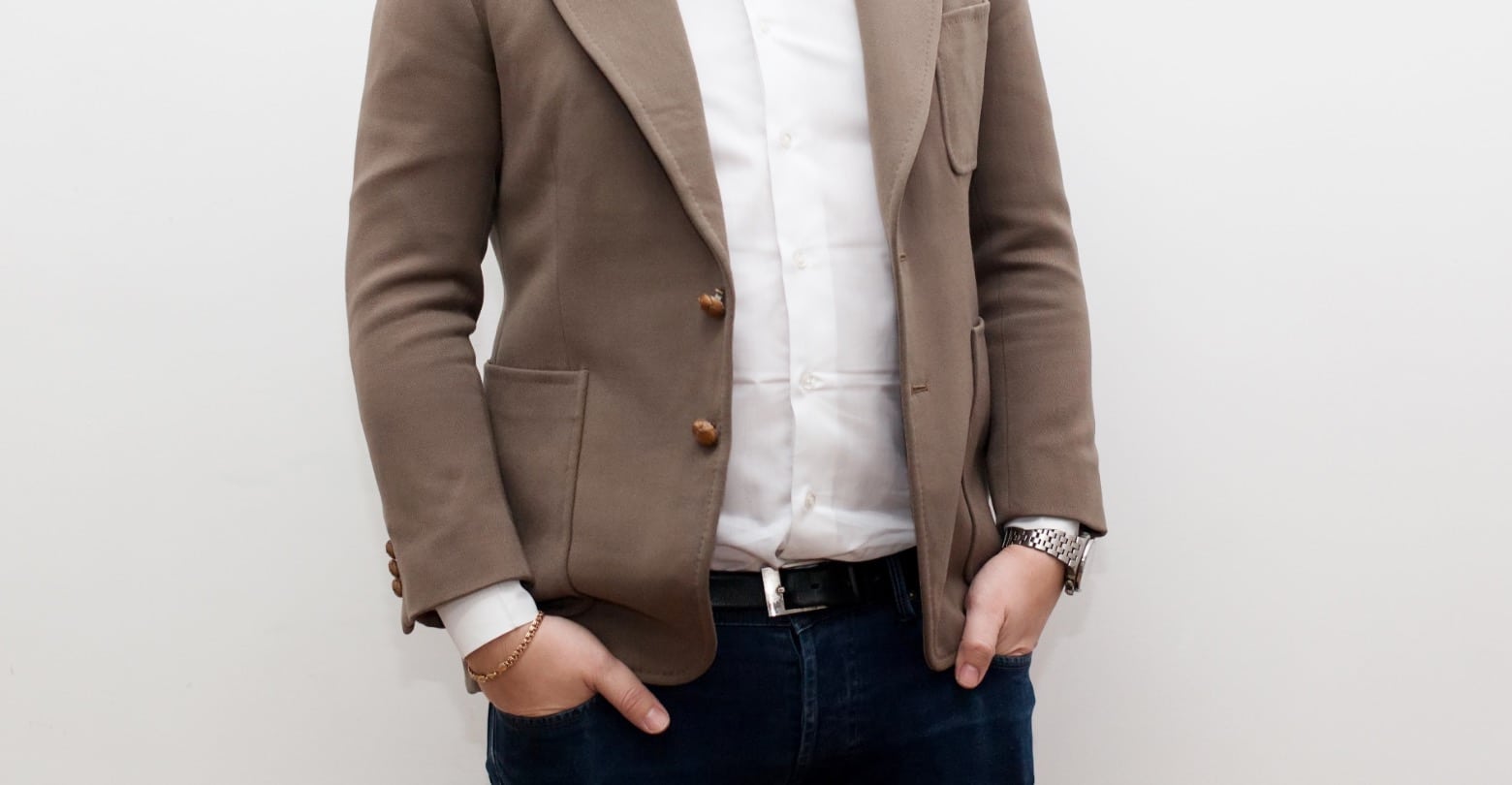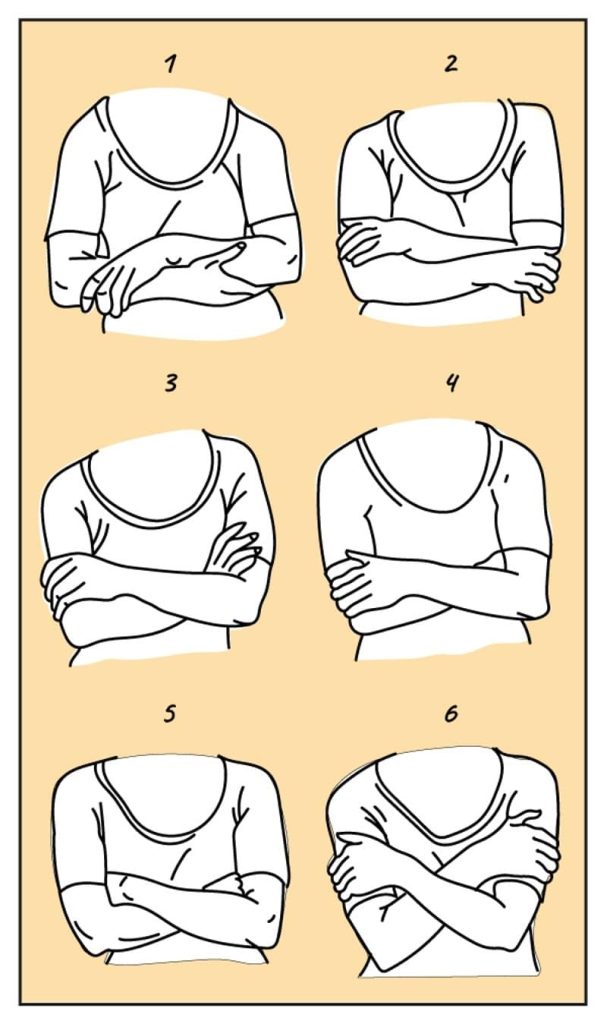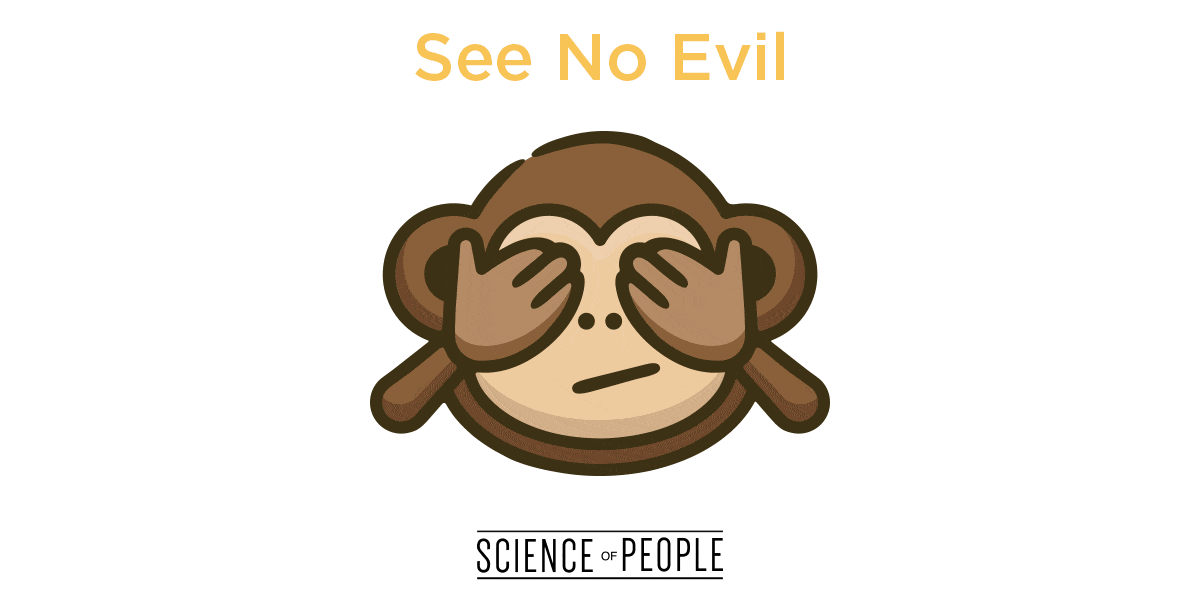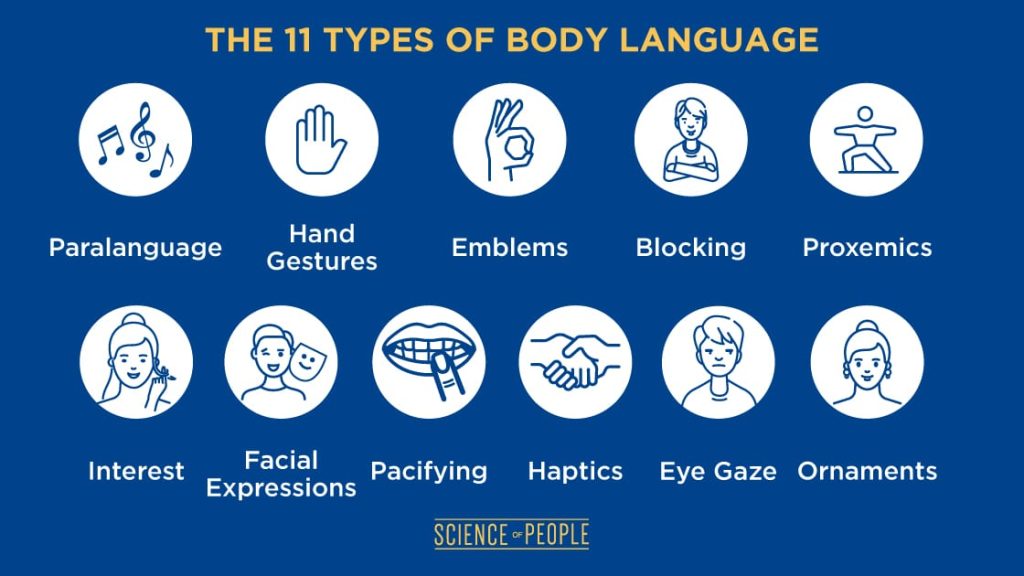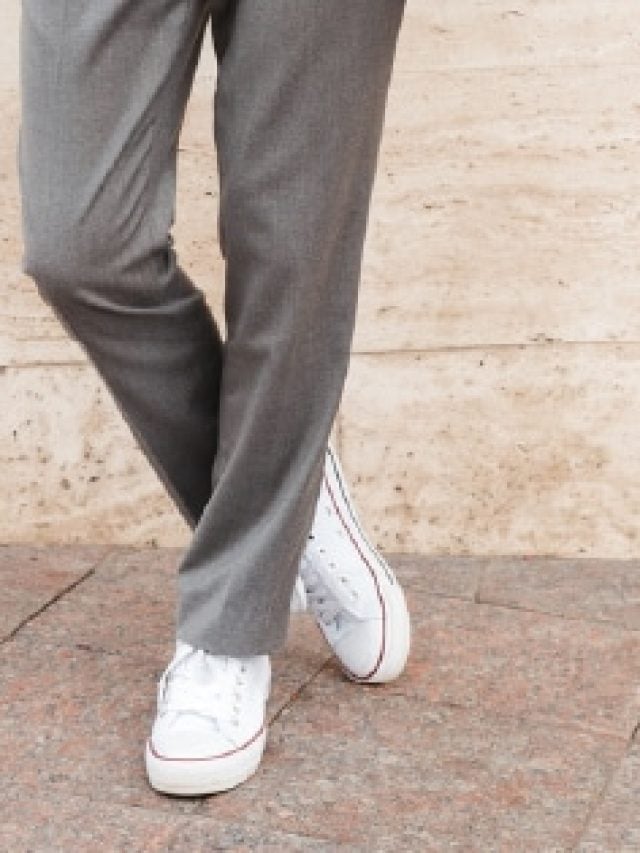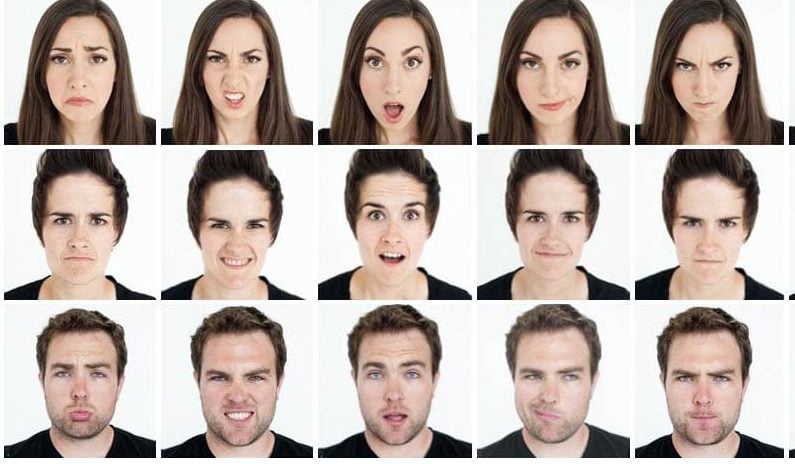Here is a list of body language communication and a free video watch with extra vocabulary. There are many examples of how body language is a form of communication. Body language is used in every country and culture throughout the world.
Why is body language important to understand?
- Body language is used to assess people’s characters. It is one of the first ways we assess a stranger’s character.
- Body language is used to communicate directly with someone when language is not possible.
- Body language is commonly used and assessed at work and interviews.
- Body language is an essential part of friendships and relationships.
- Body language can lead to great misunderstanding between different cultures.
The video tutorial below gives some of the most common examples of body language. More examples are listed under the video.
Body Language Vocabulary: Video Tutorial
A great video to learn some vocabulary for body language communication. A fun video to show that learning vocabulary can be fun!!!
List of Body Language
Below is a list of body language that is common in the west with the common meaning.
Facial Expressions
- Avoiding eye contact = shy, worried, lying
- Crinkling nose = disgust
- Deadpan face (without any expression) = emotionless or hiding feelings
- Direct eye contact = confidence
- Eyes staring into the distance = dreamy, not concentrating
- Pressing lips together (tight lipped) = annoyed, angry
- Raised eye brows = doubtful, disbelieving
- Smiling = friendly
Physical Actions
- Arms behind back, shoulders back = confidence
- Arms crossed = defensive or insecure but sometimes it means being angry
- Bowing (bending at the waist) = greeting someone new (in some countries)
- Biting nails = nervous
- Blushing (going red in the cheeks) or stammering (speaking with hesitations and repeated letters) = embarrassment
- Eye rubbing = tired or disbelieving
- Hands covering gaping mouth = scared
- Putting arms up with palms facing forward = submission
- Scratching one’s head = confused
- Shaking the head = negative, no
- Shrugging shoulders (moving shoulders up and down) = don’t know, doubt, confused
- Stroking one’s chin = thinking deeply
- Nodding head = agreement, yes
- Firm handshake = strong and decisive / limp handshake = weak
International Problems with Body Language
Nodding head = In some countries, it means “yes” but in other countries it means “no”. Likewise, a shaking head means “no” in some countries but “yes” in others.
Silence = In the West, this can be negative and be a problem between people. However, in other countries, such as China or Japan, it can be a sign of agreement or femininity.
Personal space = In countries, such as England, people should stand a respectful distance from each other but in other countries, such as Spain, people touch each other when talking. In Japan, the person space is often bigger between people than in England. Respectful space between people changes depending on countries.
Eye Contact = In the West, this is a sign of confidence and is important when listening actively to someone. On the other hand, there are countries where this might be a sign of aggression and confrontation.
Practice Using Body Language Vocabulary
Fill the gaps of these sentences with the suitable words:
1. I had no idea what she was talking about. Then suddenly she asked a question that I couldn’t understand so I just ………….. my shoulders and walked away.
2. My boss always tells tall stories. Yesterday he came to work with another unbelievable story but the only response I could give was to ……….. my eyebrows.
3. If there’s one thing I hate, it’s being late. Once I was in a really long meeting at work and by the time we finished I was late to meet my friend. During the meeting, I could feel myself getting impatient and my foot started ……………. on the floor.
4. I can’t stand watching films at the cinema because you can’t relax like you can in private, particularly when watching an action movie full of surprises and shocks. When there is a really sudden unexpected scene, my eyes ………. and my mouth ……… open which I find really embarrassing in public.
5. I remember once I was late for an appointment. When I arrived, which was over 1 hour late, I …………. deep red and stammered an apology.
Answers
- shrugged (the answer isn’t “shrugged off” because that means to get rid of – usually a feeling – and does relate to shoulders)
- raise
- tapping (the answer isn’t stamping because stamping is when you are very angry not impatient)
- widen gapes (don’t forget the “s”)
- blushed
Using vocabulary in IELTS
Q) In what way is body language a form of communication?
A) Well, people use body language to send a message or to indicate something so it is definitely a way to communicate. For example, when people raise their eyebrows, it often means they are incredulous or disbelieving and when they tap their foot on the floor, you know they are impatient. So, using facial expressions and physical actions can communicate things to other people.
Q) Do you think it is possible to misunderstand someone’s body language?
A) Yes, definitely. When someone avoids your eye, it is possible to think that they are avoiding your question and don’t want to talk to you. But really, it might be that they are just shy. So, it’s quite easy to grasp the wrong meaning in people’s actions.
Q) Describe a time you were late for an appointment.
A) I remember, about one month ago, organising to meet someone in the town center at 9pm. Unfortunately, I was delayed because of traffic and didn’t arrive until about 9.30pm. My friend was really mad. She had her arms crossed and was tapping her foot impatiently on the ground. I was so embarrassed and blushed a lot. I stammered my apology but felt really uncomfortable because she was staring at me with angry eyes. Anyway, we sorted out our differences and have been really good friends ever since. (this is an example of part of a talk for speaking part 2 – add details and descriptions)
Main IELTS Pages
Develop your IELTS skills with tips, model answers, lessons, free videos and more.
- IELTS Listening
- IELTS Reading
- IELTS Writing Task 1
- IELTS Writing Task 2
- IELTS Speaking
- Vocabulary for IELTS
- IELTS Test Information (FAQ)
- Home Page: IELTS Liz
На примерах рассмотрели слова и выражения, описывающие жесты, мимику и позы.
Язык тела (body language) передает гораздо больше информации, чем слова. По выражению лица, позе и движению рук можно понять, что чувствует человек и говорит ли он то, что думает. Сегодня разберем выражения, которые используются с определенными частями тела, и научимся описывать невербальные сигналы.
Голова
Движением головы можно согласиться с человеком или возразить ему, признать вину или показать, что вам интересно, скучно, страшно или неловко.
| Словосочетание | Пример |
|---|---|
| to nod (one’s head) — кивать | Mary nodded her head sympathetically and offered her help. — Мэри сочувственно кивнула и предложила помощь. |
| to bob one’s head — кивать | I saw my maths teacher and bobbed my head. — Я увидела своего учителя математики и кивнула ему. |
| to jerk one’s head up — вскинуть/вздернуть голову | Tom jerked his head up when somebody called his name. — Том вздернул голову, когда его кто-то позвал. |
| to shake one’s head — качать/мотать головой | Having heard the news, my mum shook her head in disbelief. — Услышав новости, мама покачала головой, не веря своим ушам. |
| to tilt one’s head (to one side) — наклонить голову (набок) | She was listening to him attentively, tilting her head to one side. — Она внимательно его слушала, наклонив голову набок. |
| to bow one’s head — склонить голову | She bowed her head in shame when her mother began to tell her off. — Она стыдливо склонила голову, когда мама начала ее отчитывать. |
| to scratch one’s head — чесать затылок | When I asked my husband what happened, he only scratched his head. — Когда я спросила мужа, что произошло, он лишь почесал затылок. |
| to rub the back of one’s head — потирать затылок | James smiled shyly and rubbed the back of his head. — Джеймс робко улыбнулся и потер затылок. |
| to grab/grasp one’s head — схватиться за голову | She grasped her head when she realized what he had done. — Она схватилась за голову, когда поняла, что он сделал. |
| to rest/lean one’s head on one’s hand — подпереть голову рукой | She sat thoughtfully, leaning her head on her hand. — Она задумчиво сидела, подперев голову рукой. |
| to stop one’s ears — заткнуть уши | My girlfriend simply stopped her ears and didn’t let me talk. — Моя девушка просто заткнула уши и не дала ничего сказать. |
Лицо
Как бы мы ни хотели скрыть наши мысли и чувства, выражение лица часто все выдает. Популярная идиома to be written all over someone’s face (быть на лице написанным) — языковое тому подтверждение.
| Словосочетание | Пример |
|---|---|
| to facepalm — прикрыть лицо ладонью от удивления или разочарования | She facepalmed when she saw that ridiculous shirt. — Она прикрыла лицо ладонью, когда увидела эту идиотскую рубашку. |
| to bury/put one’s face in your hands — закрыть лицо руками | When I heard the news, I buried my face in my hands and wept. — Когда я услышала новости, я закрыла лицо руками и заплакала. |
| to make/pull a face (at smb) — гримасничать, состроить рожу/гримасу | My brother pulled a face at me and walked away, slamming the door behind him. — Брат состроил мне гримасу и ушел, хлопнув дверью. |
| to grimace (at smb/smth) — гримасничать, кривиться, морщиться | My boss heard his rival’s name and grimaced in disgust. — Начальник услышал имя своего конкурента и с отвращением скривился. |
| to pull a long face — сделать кислое лицо | She pulled a long face when Clara asked her about her boyfriend. — Она сделала кислое лицо, когда Клара спросила о ее парне. |
| to keep a straight face — удержаться от улыбки/смеха | I tried to keep a straight face, but in the end just burst into laughter. — Я пыталась удержаться от смеха, но в конце концов расхохоталась. |
| to sulk — дуться, хмуриться | My girlfriend sulked all the way and didn’t want to talk to me. — Моя девушка дулась всю дорогу и не хотела со мной разговаривать. |
| to wince (at smth) — сморщиться, передернуться | She winced at his tone but tried to contain herself. — Ее передернуло от его тона, но она постаралась взять себя в руки. |
| to crease/crumple (up) — морщиться, кривиться | Betty’s face crumpled up, and I saw her eyes filling with tears. — Лицо Бетти сморщилось, и я увидел, как на ее глазах проступили слезы. |
Иногда достаточно лишь наморщить лоб или поднять брови, чтобы выразить удивление, гнев, презрение, сосредоточенность или другие эмоции.
| Словосочетание | Пример |
|---|---|
| to frown (at smb/smth), to furrow one’s eyebrows — хмуриться | When I asked him about the interview, he just frowned. — Когда я спросила его о собеседовании, он лишь нахмурился. |
| to knit/draw one’s brow(s) — хмуриться, морщиться, морщить лоб | The task was so hard that he knitted his brows in concentration. — Задача была такой трудной, что он сосредоточенно наморщил лоб. |
| to wrinkle one’s brow/forehead — морщить лоб | He didn’t expect to get such a high bill and wrinkled his brow. — Он не ожидал получить такой огромный счет и поморщил лоб. |
| to raise/lift one’s eyebrows — поднять/вскинуть брови | Everybody raised their eyebrows when he turned up with his new wife. — Все вскинули брови, когда он появился со своей новой женой. |
| to slap one’s forehead — ударить себя по лбу | I slapped my forehead when I realized how simple the solution was. — Я ударил себя по лбу, когда понял, как просто все решалось. |
| to rub one’s forehead/temples — массировать лоб/виски | He was rubbing his temples as if it helped him to think better. — Он массировал виски, как будто это помогало ему лучше думать. |
О важности зрительного контакта (eye contact) говорят все. Наши глаза действительно способны посылать такое количество сигналов, что и слова не нужны.
| Словосочетание | Пример |
|---|---|
| to goggle (at smb/smth) — пучить глаза, вылупиться | I goggled at him in disbelief and didn’t know what to do. — Я вылупилась на него в недоумении и не знала, что делать. |
| to bug out, to round, to widen — широко открыть, выпучить | Her eyes widened in surprise when she saw me with her ex. — Она удивленно выпучила глаза, когда увидела меня со своим бывшим. |
| to close one’s eyes tight — жмуриться | I closed my eyes tight and tried to gather my thoughts. — Я зажмурилась и пыталась собраться с мыслями. |
| to squint (one’s eyes) — щуриться | I had to squint my eyes to spot him in the distance. — Мне пришлось прищуриться, чтобы заметить его вдалеке. |
| to narrow one’s eyes — щуриться, жмуриться | When he started to talk, the CEO narrowed his eyes in suspicion. — Когда он начал говорить, директор с подозрением прищурился. |
| to rub one’s eyes — потирать глаза | She rubbed her eyes sleepily and said that she was very tired. — Она сонно потерла глаза и сказала, что очень устала. |
| to wink (at smb) — подмигивать | Jack winked at her, and she realized that he wasn’t being serious. — Джек подмигнул ей, и она поняла, что все было не всерьез. |
| to blink (at smb) — моргать | When she told us the truth, everybody blinked at her in astonishment. — Когда она рассказала правду, все удивленно заморгали. |
| to bat one’s eyes/eyelashes (at smb) — моргать, строить глазки, хлопать ресницами | I hate it when my sister bats her eyelashes at strange men. — Ненавижу, когда сестра строит глазки незнакомым мужчинам. |
| to roll one’s eyes — закатывать глаза | When asked the same question again, she sighed and rolled her eyes. — Когда ей задали тот же вопрос, она вздохнула и закатила глаза. |
| to drop/lower one’s eyes — опустить глаза, потупиться | She couldn’t bear his angry look and dropped her eyes. — Она не могла вынести его сердитый взгляд и опустила глаза. |
| to avert one’s eyes, to look away — отводить взгляд | She quickly averted her eyes and pretended to be engrossed in her work. — Она быстро отвела взгляд и сделала вид, что погружена в работу. |
| to give smb the side-eye, to look askance (at smb/smth) — смотреть искоса, коситься | Everybody looked askance at his oversized suit. — Все покосились на его мешковатый костюм. |
| to stare/gaze (at smb/smth) — таращиться, пристально смотреть | He stared blankly at the note she left for him on the table. — Он непонимающе таращился на записку, которую она оставила ему на столе. |
| to bore into smb, to pierce through smb — сверлить глазами | I felt his brown eyes boring into me throughout the performance. — Я чувствовала, как он сверлил меня глазами все представление. |
| to scowl/glower (at smb/smth) — смотреть волком/сердито | The girl scowled at the teacher and entered the classroom. — Девочка сердито посмотрела на учительницу и зашла в класс. |
| to light up — загораться | My kids’ eyes lit up with excitement when they saw the presents. — Когда дети увидели подарки, у них загорелись глаза от восторга. |
| to sparkle, to shine — сиять, блестеть, гореть | Lucy’s eyes shone with delight as he pulled out a ring from his pocket. — Глаза Люси засияли от счастья, когда он вытащил из кармана кольцо. |
| to twinkle — блестеть, поблескивать | I saw his eyes twinkle with mischief and understood everything. — Я увидела, что у него шкодливо поблескивают глаза, и все поняла. |
Интересно, что слова и выражения, связанные с носом, почти всегда имеют негативный оттенок. Тут и отвращение, и тревожность, и отчаяние, и злость.
| Словосочетание | Пример |
|---|---|
| to sniff (at smb/smth) — фыркать | After a tour around the apartment, Amy sniffed and said nothing. — После осмотра квартиры, Эми фыркнула, ничего не сказав. |
| to snort — фыркать, хрюкать | My mum heard me snorting with laughter and asked if I was OK. — Мама услышала, как я хрюкаю от смеха, и спросила, все ли хорошо. |
| to wrinkle (up) one’s nose — морщить нос | When I shared my plans, she wrinkled her nose in disapproval. — Когда я поделилась планами, она неодобрительно поморщила нос. |
| to turn up one’s nose (at smth) — воротить нос, отвернуться | He turned up his nose at the meal and said that he wasn’t hungry. — Он отвернулся от блюда и сказал, что не голоден. |
| to scratch (at) one’s nose — чесать нос | He was really nervous and kept scratching his nose. — Он очень нервничал и продолжал чесать нос. |
| to hold one’s nose — зажимать/затыкать нос | She entered the kitchen and held her nose to avoid the smell. — Она зашла на кухню и зажала нос, чтобы не чувствовать запах. |
| to pinch the bridge of one’s nose — зажимать переносицу | Mark took off his glasses and pinched the bridge of his nose in frustration. — Марк снял очки и удрученно зажал переносицу. |
| to thumb one’s nose, to cock a snook — дразниться | Have you seen the new video where prince Louis is thumbing his nose? — Ты видела новый ролик, где принц Луи дразнится? |
Выражение рта может передать всю гамму чувств — от широкой улыбки до ухмылки, от дрожащих губ до неодобрительного цоканья языком, от стиснутых зубов до отвисшей челюсти.
| Словосочетание | Пример |
|---|---|
| to grin/smile (from ear to ear) — улыбаться до ушей, расплыться в улыбке | He said that he had been promoted and grinned from ear to ear. — Он сказал, что его повысили, и расплылся в улыбке. |
| to smirk/sneer — ухмыляться | She smirked when she found out that her ex got divorced again. — Она ухмыльнулась, когда узнала, что ее бывший снова развелся. |
| to crack/force a smile, to smile thinly — выдавить улыбку | Although I felt bad, I forced a smile and joined the party. — Хотя мне было плохо, я выдавила улыбку и присоединилась к празднику. |
| to drop/fall (open) — отвиснуть (о челюсти) | His jaw fell open when she told him how old she actually was. — У него челюсть отвисла, когда она сказала, сколько ей на самом деле лет. |
| to yawn — зевать | George yawned ostentatiously in the middle of my presentation. — Джордж демонстративно зевал во время моей презентации. |
| to cover one’s mouth — закрыть/прикрыть рот, испугавшись увиденного | The girl covered her mouth at the sight and ran out of the room. — Девушка прикрыла рот, испугавшись увиденного, и выбежала из комнаты. |
| to purse/tighten one’s lips — поджать губы | She pursed her lips and said that she didn’t accept such behaviour. — Она поджала губы и сказала, что не приемлет такого поведения. |
| to curl one’s lip — презрительно кривить губы/рот | He looked around his accommodation and curled his lip. — Он оглядел свой ночлег и презрительно скривил рот. |
| to pout (one’s lips) — дуться, сложить губки бантиком | Can you stop pouting like a little girl who didn’t get a toy? — Ты можешь перестать дуться, как маленькая девочка, которой не дали игрушку? |
| to lick one’s lips — облизывать губы | Peter licked his lips at the thought of his inheritance. — Питер облизнул губы от мысли о своем наследстве. |
| to bite one’s (lower/upper) lip — покусывать (нижнюю/верхнюю) губу | She bit her lip nervously, trying not to burst into tears. — Она нервно покусывала губу, пытаясь нe заплакать. |
| to quiver/tremble — дрожать (о губах) | Her lips quivered when she heard that he didn’t like her. — Ее губы задрожали, когда она услышала, что не нравится ему. |
| to show/bare one’s teeth — скалиться, обнажить зубы | He showed his teeth angrily and yelled at me to get out of his office. — Он злобно оскалился и с криком выгнал меня из своего кабинета. |
| to clench/grit one’s teeth — стиснуть зубы | She clenched her teeth in pain and asked us to leave her alone. — Она стиснула зубы от боли и попросила нас оставить ее. |
| to click one’s tongue — цокать (языком) | When I do something wrong, my mom clicks her tongue in disapproval. — Когда я делаю что-то не так, мама неодобрительно цокает языком. |
| to stick one’s tongue out (at smb) — высовывать/показывать язык | My daughter stuck her tongue out at me when I didn’t let her go clubbing. — Дочка показала мне язык, когда я не пустила ее на тусовку. |
| to stroke/rub one’s chin — поглаживать подбородок | The detective listened to him, stroking his chin thoughtfully. — Детектив слушал его, задумчиво поглаживая подбородок. |
Тело
Поза, в которой мы стоим, сидим или лежим, походка и непроизвольные движения могут о многом рассказать.
| Словосочетание | Пример |
|---|---|
| to stand/sit upright — стоять/сидеть прямо | Marta sat upright and seemed rather tense. — Марта сидела выпрямившись и казалась довольно напряженной. |
| to square/roll back one’s shoulders — расправить плечи | Frank squared his shoulders and headed onto the stage. — Фрэнк расправил плечи и направился на сцену. |
| to slouch — сутулиться, горбиться | She wasn’t in the mood to work and slouched to the park. — Она была не в настроении работать и сгорбившись поплелась в парк. |
| to shrug your shoulders — пожимать плечами | She shrugged her shoulders and said that she had nothing to do with it. — Она пожала плечами и сказала, что ни при чем. |
| to hunch your shoulders up — втягивать голову в плечи | I couldn’t relax and kept hunching my shoulders up. — Я не могла расслабиться и продолжала втягивать голову в плечи. |
| to sprawl — распластаться, растянуться | He quickly got bored and sprawled lazily in the armchair. — Он быстро заскучал и лениво растянулся в кресле. |
| to bow — кланяться | Everybody bowed deferentially as the boss entered the room. — Все учтиво поклонились, когда в комнату вошел начальник. |
| to double up/over — скрючиться, согнуться, скорчиться | When everybody fell for Joe’s prank, he doubled up with laughter. — Когда все повелись на розыгрыш Джо, он скорчился от смеха. |
| to lean forward — податься/наклониться вперед | She leaned forward charmingly, and he whispered something in her ear. — Она чарующе подалась вперед, и он что-то шепнул ей на ухо. |
| to lean back — откинуться | When it was over, I relaxed and leaned back in my chair. — Когда все закончилось, я расслабился и откинулся на спинку стула. |
| to cringe, to recoil — отпрянуть, отшатнуться | He tried to soothe her, but she recoiled from him and stood up. — Он попытался ее утешить, но она отшатнулась от него и встала. |
| to shudder — вздрагивать | When I was appointed to deliver a speech, I shuddered with horror. — Когда мне поручили выступить с речью, я вздрогнула от ужаса. |
| to shake, to tremble — трястись, дрожать | I trembled with fear, although I knew that I wasn’t guilty. — Я тряслась от ужаса, хотя знала, что не виновата. |
| to squirm, to fidget — ерзать, ворочаться | He fidgeted throughout the lecture thinking about the upcoming test. — Он ерзал на протяжении всей лекции, думая о грядущем тесте. |
Движения руками могут как сопровождать речь, делая ее ярче, так и передавать наши намерения, чувства и мысли.
| Словосочетание | Пример |
|---|---|
| to hold one’s arms/hands behind one’s back — держать руки за спиной | He was walking to and fro, holding his hands behind his back. — Он ходил туда-сюда, держа руки за спиной. |
| to fold/cross one’s arms — сложить/скрестить руки | She folded her arms and asked me what I was doing. — Она сложила руки и спросила, что я делаю. |
| to stand with arms akimbo, to put one’s hands on one’s hips — упереть руки в боки | My dad stood with arms akimbo waiting for my explanation. — Папа стоял, уперев руки в боки, и ждал моих объяснений. |
| to extend/hold out one’s hand — протягивать руку | He smiled broadly and held out his hand to the new employee. — Он широко улыбнулся и протянул руку новому сотруднику. |
| to wave (one’s hand) at smb — махать рукой | I waved at my classmate but she didn’t notice me. — Я помахала рукой однокласснице, но она меня не заметила. |
| to wring one’s hands — заламывать руки | She wrung her hands in despair and waited for him to say something. — В отчаянии она заламывала руки и ждала, что он скажет. |
| to rub one’s hands together — потирать руки | He was rubbing his hands together at the thought of becoming the CEO. — Он потирал руки, думая о том, как станет директором компании. |
| to fold/clasp one’s hands — сложить руки (в замок) | She sat down and folded her hands in her lap, waiting for her appointment. — Она села и сложила руки на коленях, ожидая приема. |
| to clap one’s hands — хлопать в ладоши | Sue clapped her hands when she saw a puppy in her room. — Сью захлопала в ладоши, когда увидела щенка в комнате. |
| to clench one’s fist — сжимать кулак | Having heard the news, he hung up and clenched his fists in anger. — Узнав новости, он бросил трубку и сжал кулаки от злости. |
| to shake one’s fist (at smb) — махать кулаком | I saw him shaking his fist at me through the rear window of the car. — Я увидела, как он машет мне кулаком из заднего окна машины. |
Отдельного внимания заслуживают пальцы. Что только люди с ними не делают: гнут, щелкают, стучат, складывают причудливым образом, реагируя тем самым на происходящее.
| Словосочетание | Пример |
|---|---|
| to tap/drum one’s fingers — стучать пальцами | Tom was tapping his fingers on the table, annoying everybody around. — Том стучал пальцами по столу, раздражая всех вокруг. |
| to steeple one’s fingers — сложить пальцы домиком | When he steeples his fingers, he looks like an evil genius. — Когда он складывает пальцы домиком, то выглядит как злой гений. |
| to make a cuckoo sign — крутить пальцем у виска | When I told her that I had left my job, she made the cuckoo sign. — Когда я сказала, что ушла с работы, она покрутила пальцем у виска. |
| to point (one’s finger) at smb/smth — показывать/тыкать пальцем | My heart sank when the teacher pointed his finger at me. — У меня сердце ушло в пятки, когда учитель указал на меня пальцем. |
| to jab one’s finger (at smb/smth) — тыкать пальцем | The man was jabbing a finger at his son, blaming him for what had happened. — Мужчина тыкал пальцем в сына, обвиняя его в произошедшем. |
| to wag/shake one’s finger (at smb/smth) — грозить пальцем | The old lady wagged her finger at the naughty boys. — Старушка погрозила пальцем непослушным мальчишкам. |
| to flex one’s fingers — сгибать/гнуть пальцы | Anna sat flexing her fingers and hoped to avoid punishment. — Анна сидела и сгибала пальцы, надеясь избежать наказания. |
| to snap one’s fingers — щелкать пальцами | He snapped his fingers trying to remember the word. — Он щелкал пальцами, пытаясь вспомнить слово. |
| to crack one’s knuckles — хрустеть костяшками | My boyfriend likes to crack his knuckles to calm his nerves. — Мой парень любит хрустеть костяшками, чтобы успокоить нервы. |
| to raise one’s thumb, to give the thumbs up — поднять большой палец вверх | He read through the draft of the proposal and raised his thumb. — Он прочитал черновик проекта и поднял большой палец вверх. |
| to give the thumbs down — опустить большой палец вниз | When I suggested going to the theatre, he gave the thumbs down to that. — Когда я предложила пойти в театр, он опустил большой палец. |
| to give someone the bird/finger — показать средний палец | I didn’t know how to react when my son gave me the finger. — Я не знала, как реагировать, когда сын показал мне средний палец. |
| to bite one’s nails — грызть ногти | Do you also bite your nails when you’re nervous? — Ты тоже грызешь ногти, когда нервничаешь? |
Положение и движение ног может свидетельствовать о зажатости или уверенности человека, спокойствии или волнении, радости или злости.
| Словосочетание | Пример |
|---|---|
| to cross one’s legs — скрестить ноги, положить ногу на ногу | Lena crossed her legs and opened her laptop with an air of importance. — Лена скрестила ноги и с важным видом открыла ноутбук. |
| to swing/shake one’s legs — качать/болтать ногами | He has a habit of swinging his legs when he’s nervous. — У него есть привычка болтать ногами, когда он нервничает. |
| to spread one’s legs (wide) — расставить ноги | Don’t spread your legs on public transport! It’s bad manners. — Не расставляй ноги в общественном транспорте! Это неприлично. |
| to stand with (one’s) legs astride — стоять с расставленными ногами, расставить ноги | He stood with his legs astride and told everybody what to do. — Он стоял, расставив ноги, и говорил всем, что делать. |
| to hug one’s knees — обхватить колени | She was sitting in the corner hugging her knees, waiting for him to come. — Она сидела в углу, обхватив колени, и ждала, когда он придет. |
| to shuffle (one’s feet) — шаркать/ерзать ногами | When she complimented him, he shuffled his feet and blushed. — Когда она сделала ему комплимент, он заерзал ногами и покраснел. |
| to tap one’s feet — постукивать ногами | Josh was really agitated and tapped his feet incessantly. — Джош был очень возбужден и беспрерывно постукивал ногами. |
| to stamp one’s foot — топать ногой | Simon stamped his foot in anger, and everybody lapsed into silence. — Саймон в гневе топнул ногой, и все замолчали. |
| to wiggle one’s feet/toes — шевелить ступнями/пальцами | She was playfully wiggling her feet trying to attract his attention. — Она игриво шевелила ступнями, пытаясь привлечь его внимание. |
Мы постарались охватить основные движения и положения частей тела, однако их гораздо больше. Обращайте внимание на то, как жесты и мимику описывают в фильмах и книгах и пополняйте словарный запас. А если хотите повторить, как говорить о внешности людей, читайте нашу статью «Описание внешности на английском языке».
Готовы проверить, что запомнили из новых слов и выражений? Переходите к тесту.
Тест по теме «Описываем язык тела по-английски»
© 2023 englex.ru, копирование материалов возможно только при указании прямой активной ссылки на первоисточник.
Words that describe one’s bodily movements.
22 words
63 learners
Learn words with Flashcards and other activities
Other learning activities
Full list of words from this list:
-
strong
having strength or power greater than average or expected
-
smooth
having a surface free from roughness or irregularities
-
controlled
restrained or managed or kept within certain bounds
-
effortless
requiring or apparently requiring no work
-
sway
move back and forth
-
bounce
spring back; spring away from an impact
-
rhythm
an interval during which a recurring sequence occurs
-
stagger
walk with great difficulty
-
burst
come open suddenly and violently
-
lull
make calm or still
-
rock
material consisting of the aggregate of minerals
-
jerky
marked by abrupt starts and stops
-
kick
drive or propel with the foot
-
bang
the swift release of a store of affective force
-
muscle
animal tissue consisting predominantly of contractile cells
-
grind
reduce to small pieces or particles by pounding or abrading
-
zip
forceful exertion
-
yank
pull with a sudden movement
-
wisp
a thin tuft, piece, or amount of something
-
quick
moving rapidly and lightly
-
fluid
continuous amorphous matter that tends to flow
-
regimented
strictly controlled
Created on October 15, 2008
(updated October 15, 2008)
The idea for the Describing Words engine came when I was building the engine for Related Words (it’s like a thesaurus, but gives you a much broader set of related words, rather than just synonyms). While playing around with word vectors and the «HasProperty» API of conceptnet, I had a bit of fun trying to get the adjectives which commonly describe a word. Eventually I realised that there’s a much better way of doing this: parse books!
Project Gutenberg was the initial corpus, but the parser got greedier and greedier and I ended up feeding it somewhere around 100 gigabytes of text files — mostly fiction, including many contemporary works. The parser simply looks through each book and pulls out the various descriptions of nouns.
Hopefully it’s more than just a novelty and some people will actually find it useful for their writing and brainstorming, but one neat little thing to try is to compare two nouns which are similar, but different in some significant way — for example, gender is interesting: «woman» versus «man» and «boy» versus «girl». On an inital quick analysis it seems that authors of fiction are at least 4x more likely to describe women (as opposed to men) with beauty-related terms (regarding their weight, features and general attractiveness). In fact, «beautiful» is possibly the most widely used adjective for women in all of the world’s literature, which is quite in line with the general unidimensional representation of women in many other media forms. If anyone wants to do further research into this, let me know and I can give you a lot more data (for example, there are about 25000 different entries for «woman» — too many to show here).
The blueness of the results represents their relative frequency. You can hover over an item for a second and the frequency score should pop up. The «uniqueness» sorting is default, and thanks to my Complicated Algorithm™, it orders them by the adjectives’ uniqueness to that particular noun relative to other nouns (it’s actually pretty simple). As you’d expect, you can click the «Sort By Usage Frequency» button to adjectives by their usage frequency for that noun.
Special thanks to the contributors of the open-source mongodb which was used in this project.
Please note that Describing Words uses third party scripts (such as Google Analytics and advertisements) which use cookies. To learn more, see the privacy policy.
Did you know that we can only spot lies with 54% accuracy?
Did you know there are over 20 muscles in the face that make up over 10,000 facial expressions?
Learning to decode body language is powerful and one of the most important nonverbal communication skills.
This guide is your key to reading people AND having confident body language.
In this article, we’re going to cover the essential must-knows to mastering your body language skills:
- What is body language?
- How to make yourself look approachable and relaxed during conversations.
- 10 negative cues to avoid (that you might be using regularly!).
- The 11 types of body language you’ll encounter.
Before we dive in, be sure to take our body language quiz here to find out how good you are at reading body language!
What is Body Language?
Body language is the science of nonverbal signals such as gestures, facial expressions, and eye gaze that communicate a person’s emotions and intentions. In total, there are 11 types of body language that we use to communicate. Unlike words, body language is often done subconsciously and constitutes a large part of our communication.
↑ Table of Contents ↑
Why is Body Language So Important?
What if I told you there’s a way to get almost anything you want? Things like…
- secretly knowing what someone’s thinking
- getting a raise without working any harder
- having your date never forget you and wanting more
People who are good at reading body language typically excel in their careers, have great relationships, and get “freebies” in life.
But if you’re not good at body language, don’t fret!
Body language is a skill ANYONE can learn.
If you want to learn more about the importance of body language, I recommend checking out my article here:
5 Powerful Reasons Why Body Language is Important
↑ Table of Contents ↑
What Are Some Body Language Examples?
Body language can be broken down into 2 major categories—positive or open body language, and negative or closed body language.
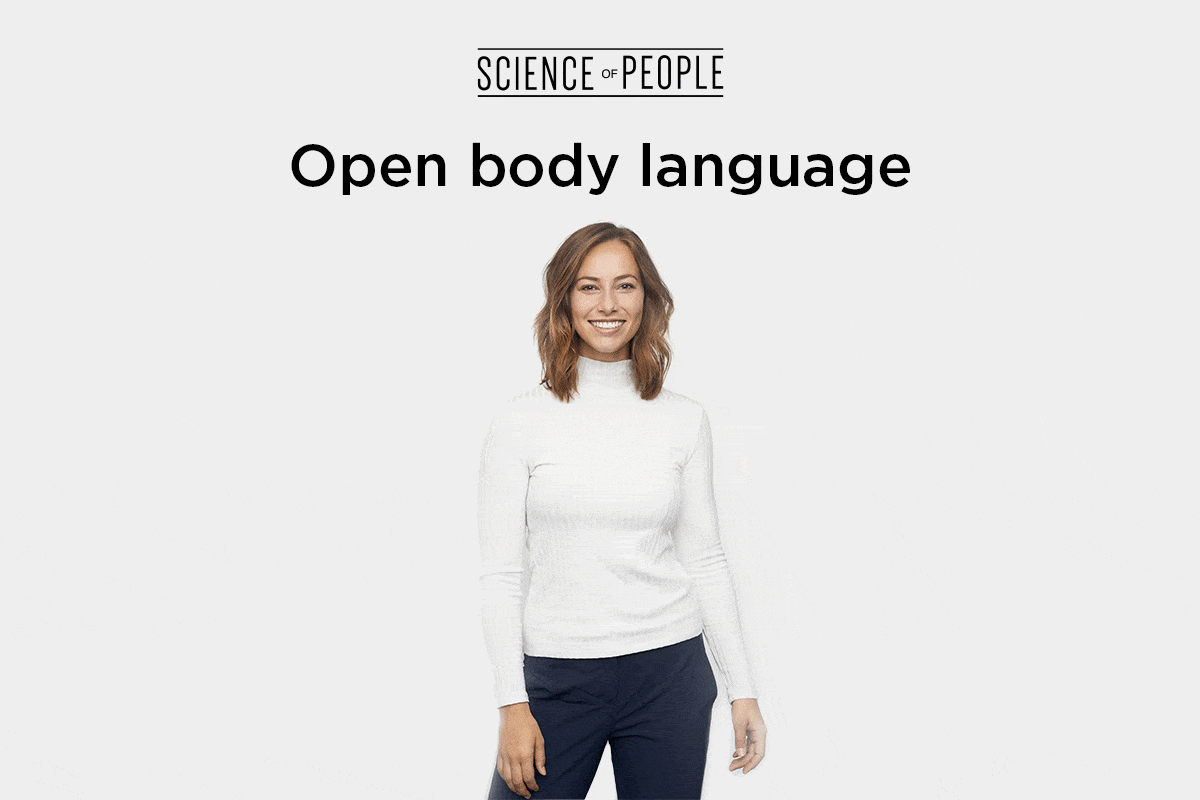
And just like how they sound, these 2 broad categories of cues signal just how open (or closed) someone is from their external environment. Whether at a networking event talking to a random stranger you’ve just met, giving a presentation or speech, or on a first date, knowing how to read these cues is key to knowing how receptive others are to you or the situation.
Reading body language is as close to mind reading as we can get.
Open Body Language Examples
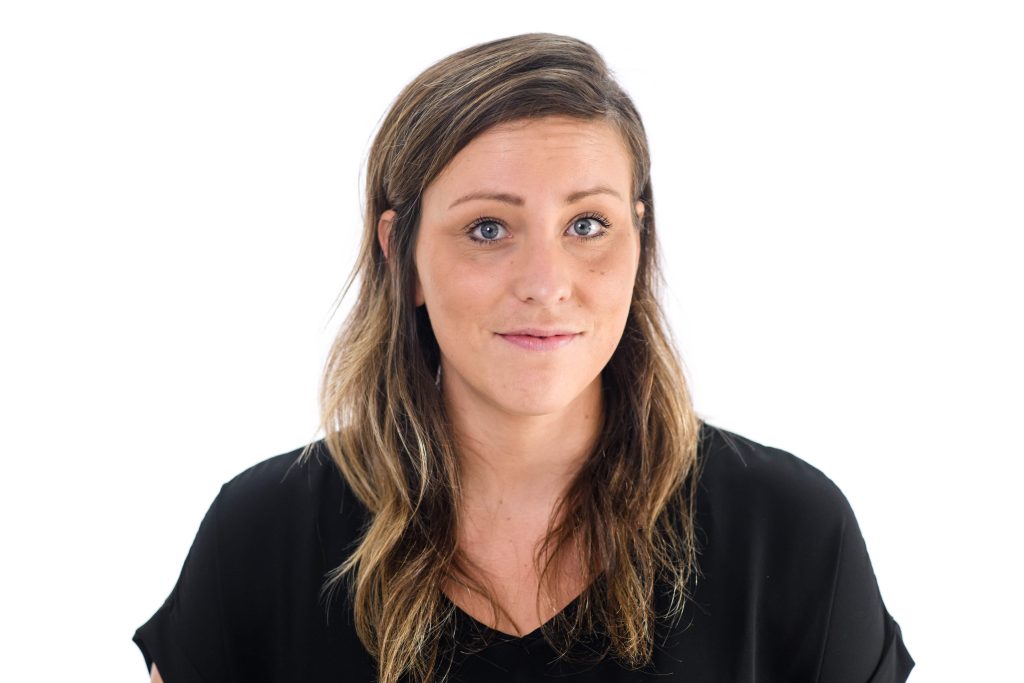
THE EYEBROW FLASH
Description: When someone does an eyebrow flash, you’ll typically see their eyebrows raise slightly for less than ⅕ of a second.
What it Means: The eyebrow raise is a great sign of interest. People tend to use the eyebrow flash in 3 main ways:
- The eyebrow flash can show intersest professionally, as when giving approval, agreeing to something, thanking someone, or seeking confirmation. It’s used as a nonverbal “yes” during conversation.
- The eyebrow flash can also show interest romantically.
- Or the eyebrow flash can show interest socially, as when 2 people recognize each other. It signals to the other person that you are happy to see them.
Whenever we use the eyebrow flash, we call attention to our face. Teachers and speakers often use it as a way to say, “Listen to this!” Or “Look at me!”
Interestingly, some cultures like the Japanese find this cue indecent and avoid it3.
The Science: According to researchers at the University of Pittsburgh, the eyebrow flash is a universally recognized form of greeting and can be found all over the world, suggesting that this gesture is common among all cultures.
Yes, this gesture is even used by monkeys and apes1 .
How to Use it: There are so many ways to use the eyebrow flash. Here are a few:
- To Show Liking: When you see someone you like or who you want to like you, give them a quick eyebrow flash followed by a warm smile.
- To Increase Engagement: If you want someone to listen to something you are about to say, raise your eyebrows right before you deliver.
- To Show Interest: Are you curious? Your eyebrows are the best way to show it!
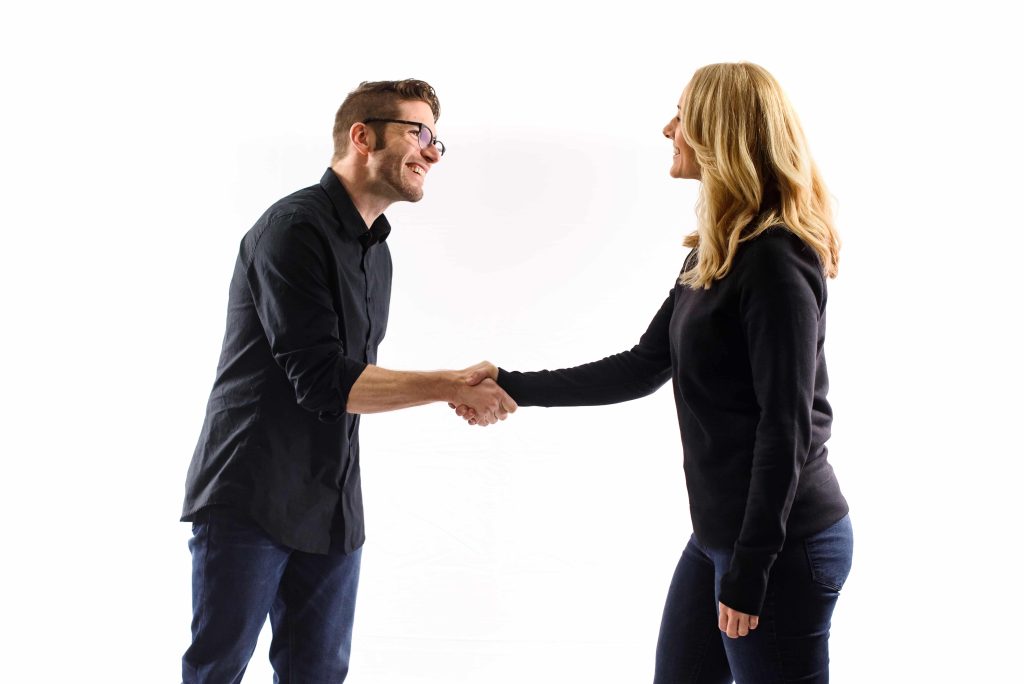
THE EQUAL HANDSHAKE
Have you ever had a cold, clammy handshake?
Or an overly dominant handshake?
Or even… a really awkward one?
Yuck! These handshakes are NOT great for building mutual rapport. Enter: the equal handshake.
Description: An equal handshake has these 7 elements:
- good eye contact
- a warm, genuine smile
- an extended arm with a slight bend at the elbow
- fingers pointing downward while approaching the other person’s hand
- this one’s the big one—EQUAL pressure during the hand clasp
- slight forward lean toward the other person
- a slow release after 1–2 seconds
What it Means: This handshake is a breath of fresh air and signals mutual respect for both parties.
An equal handshake signals confidence, openness, and power during an interaction and leaves both interactants feeling warm and fuzzy inside.
How to Use it: Before shaking hands, consider the context. Salespeople learned early on that an uninvited or surprise handshake from nowhere was damaging to their sales—the buyer obviously didn’t welcome them, and they felt forced to shake hands.
Handshakes also aren’t universal—some cultures, like Japan, commonly bow as a greeting, and other cultures, like Italy or Spain, give a kiss on the cheek.
A good rule of thumb is to only shake hands when you know the other person will warmly reciprocate it. Otherwise, a head nod is a good option—or wait for the other person to initiate first.
On another important note, older people require less pressure, so avoid crushing their hand with your firm grip. When shaking hands with a higher-status individual, allow them to set the length and pressure of the handshake first, and follow up with an equal exchange for maximum bonding.
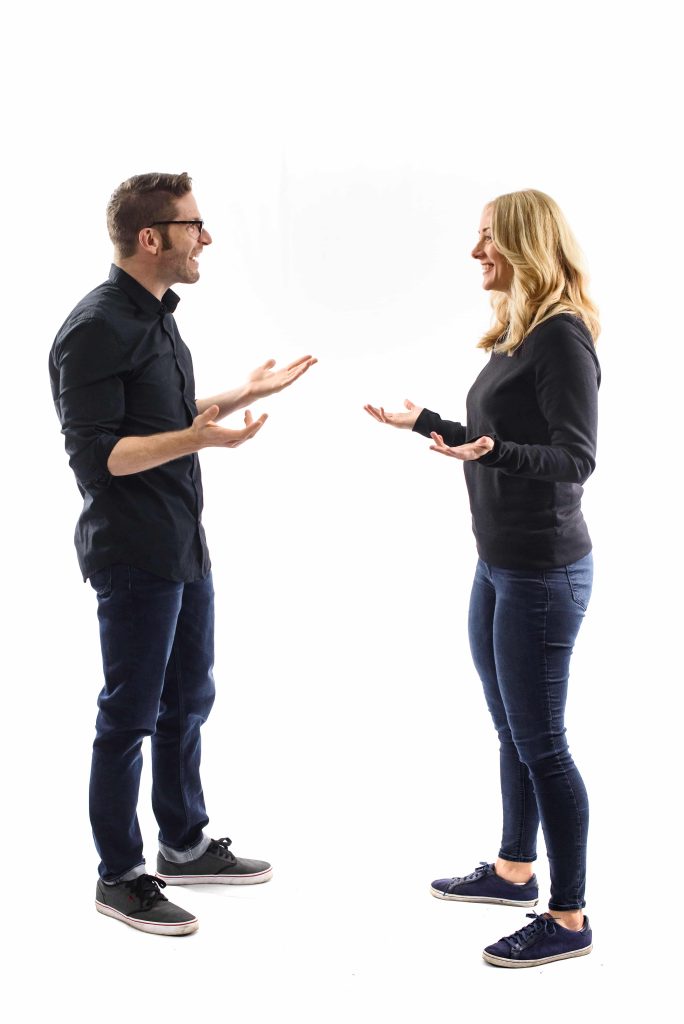
AUTHENTIC MIRRORING
Description: Displaying similar body language to other interactants during a social situation.
What it Means: Mirroring is a highly rapport-building cue that signals a desire to connect with someone else. People tend to mirror only those they like, and seeing someone else mirror our own body language creates a feeling of similarity and likeness.
The Science: Mirroring is powerful. Studies have shown that mirroring leads to:
- Greater compliance from requests. So mirror if you want to persuade someone.
- Higher sales numbers. So be sure to mirror if you are in sales.
- Positive evaluations. So mirror your manager to build rapport.
- Even larger tips from customers!
Mirroring others is literally hardwired into our brains. Professor Joseph Heinrich from the University of Michigan explains that mirroring others helps us cooperate—which leads to more food, better health, and economic growth for communities.
How to Use it: Make sure to mirror subtly. If someone nods their head vigorously in agreement, and you do the same, you may come off as too obvious—this can even lead to suspicion or decreased rapport.
Best friends often mirror without even realizing it!
You can also avoid mirroring someone entirely if you’re disinterested in them or want to create boundaries.
If the other person is displaying negative body language cues, try displaying open positive language cues yourself to get them to open up, instead of copying their closed gestures.
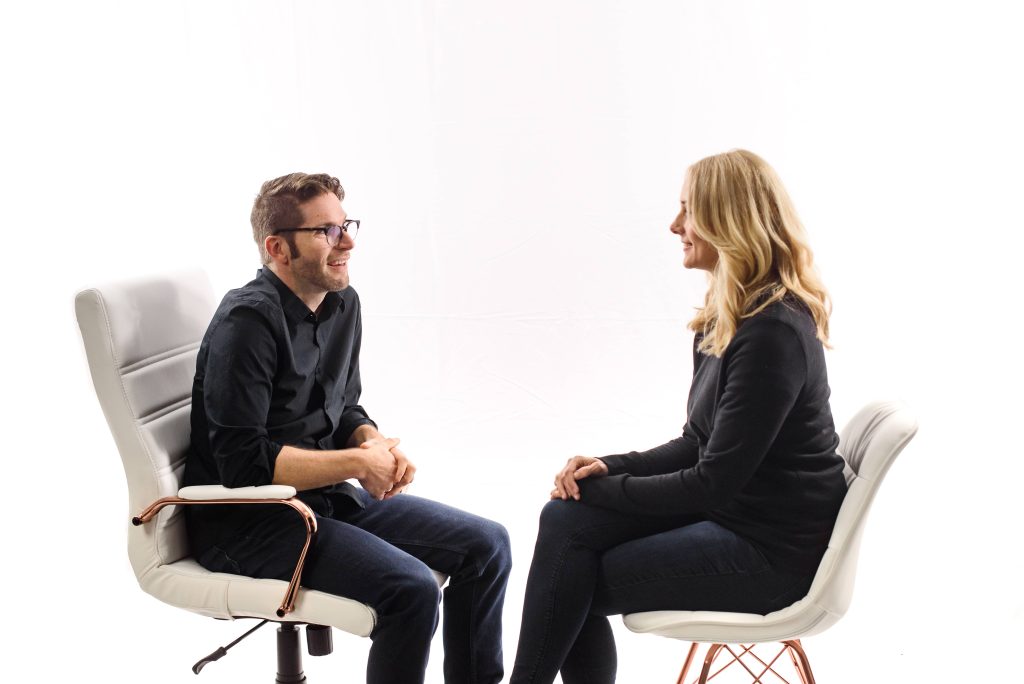
MUTUAL GAZING
Type: Interest
Description: Eye contact that is mutual—neither lacking eye contact or being a little… err, too interested.
What it Means: Longer eye contact, especially from people who are high-status, makes us feel favored. This is especially true when receiving eye contact from celebrities or movie stars2.
Increased eye contact also indicates the other person may be curious, as when people are more attentive to their surroundings, their blink rate will generally decrease3.
Warning:
Do not make 100% eye contact! That is actually a territorial signal and shows aggression. People often do it before a fight:
You want to do mutual gazing. Eye contact when you agree, when you are listening, when you are exchanging ideas, or when staring at your amazing self in the mirror:
The Science: Making eye contact just 30% of the time has been shown to significantly increase what people remember you say.
You can also give a boost to your perceived persuasiveness, truthfulness, sincerity, and credibility just by mutual eye gazing3.
Interestingly, certain personality traits were found to relate to more mutual gazing—namely, extroversion, agreeableness, and openness3.
How to Use it: Increase your eye gaze to bond. However, make sure to glance away occasionally, since too much eye contact can be seen as threatening and make people feel uncomfortable.
Pop Quiz: Real vs. Fake
Take a look at the photo below. Can you tell if this is a real or fake smile?
This is a fake smile. This smile lacks the characteristic “crow’s feet” wrinkles around the corners of the eyes.

DUCHENNE SMILE
Description: The Duchenne smile is a smile characterized by the “crow’s feet” wrinkles around the corners of the eyes along with upturned corners of the mouth. This is a real smile.
What it Means: When you see a Duchenne smile, this likely indicates genuine happiness.
It is difficult, but not impossible, to fake a real smile. In most cases, we smile dozens of times in normal conversation, but many of these smiles are given out of politeness or formality.
The Science: Research shows that babies several weeks old will already use the Duchenne smile for their mothers only, while using a more polite, social smile for others2.
People also tend to smile more with others than when alone—in fact, when we see a smiling face, endorphins are released into our system1.
Studies show that athletes will smile noticeably differently, whether they finish in first, second, or third place. This distinction was the same even in congenitally blind athletes who never even saw a smile before1.
How to Use it: When smiling, remember to “smile with your eyes,” instead of just your mouth. It also helps to smile widely enough to bring the cheeks up, helping activate the muscles around your eyes. Remember to maintain the smile even after an encounter—in fake happiness encounters, you may often see an “on-off” smile that flashes and then vanishes quickly after 2 people go their separate ways4.
Example: In this example, George W. Bush flashes a childish Duchenne smile (“Oops, I got caught!”) when he tries to open a door, but fails:

THE HEAD TILT
Description: The head tilts to one side, exposing the neck.
What it Means: A head tilt is a sign of openness. Your neck is one of your most vulnerable areas. Neck skin is much thinner and requires protection. And exposing your neck and throat opens you up.
When someone tilts their head, they are showing that they’re comfortable enough to let their neck be exposed. You can often see the head tilt (especially from women) when others are attracted to someone, although this can also be used to indicate platonic interest.
It can also show that someone is curious about what you’re saying, especially if you get the head tilt and head nod cluster:
The Science: Studies of paintings from the last 2,000 years show that women are depicted 3 times as often as men using the head tilt1. Today, you can also see women tilting their heads 3 times more than men in modern advertising:

How to Use it: Since this is a very powerful disarming behavior, you can tilt the head to the side, along with other open body language cues, to ease a tense situation or get someone to open up.
The head tilt is a very warm cue—it softens you. You want to be careful not to use it too much during sales pitches or meetings.
Example: In The Bachelor, you can often see the head tilt during romantic encounters. Watch this scene as Cassie tilts her head during their first date before she sleeps with Colton (timestamp 2:46):
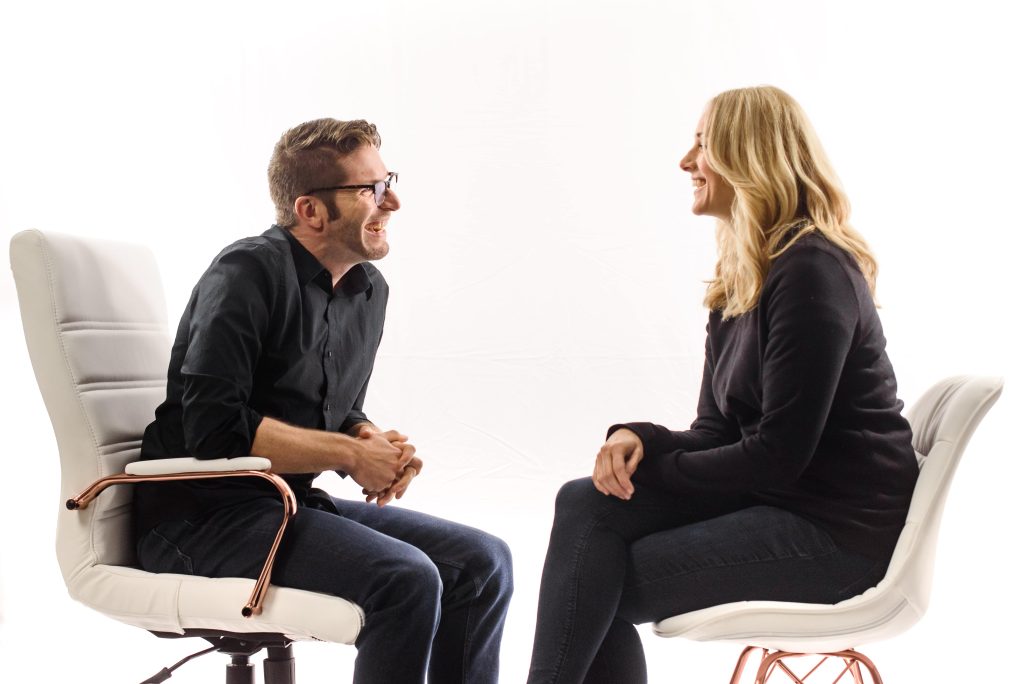
SHARED LAUGHTER
Description: Simultaneous laughter shared between individuals in response to a joke or funny observation.
What it Means: When you crack a joke and the other person shares a laugh with you, this is a good sign that they are open to connecting with you. Laughter is meant to establish potential relationships or maintain existing ones, especially if the joke wasn’t particularly funny.
Laughter is also an indication that someone is relaxed, since stiff and nervous people usually do not laugh genuinely, or instead give a tense laugh if they are in a nervous situation.
The Science: Neurologist Henri Rubenstein found that just one minute of laughter provides up to 45 minutes of subsequent relaxation1! The relaxation boost you get certainly justifies watching your favorite comedians on TV. And you know who’s great at laughing? Will Smith. In this funny “insult” episode of Will Smith vs. Margot Robbie, Will’s laughter is so contagious that his laughter even makes others laugh!
As we age, we usually laugh less. Adults laugh an average of only 15 times per day, while preschoolers laugh 400 times daily1.
A great way to boost your laughter is to get more social! Robert Provine found that laughter is more than 30x more likely to occur in social situations rather than when alone. In his study, participants were videotaped watching a funny video clip in 3 different situations:
- alone,
- with a same-sex stranger, and
- with a same-sex friend.
Those who watched alone had significantly less laughter than when watching with a stranger or friend.
How to Use it: Try incorporating humor into your conversations, such as giving the opposite answer to a yes/no question.
Example: If people are expecting you to say yes, say no; if people are expecting you to say no, say yes instead. It’s simple but effective.
This is Jennifer Lawrence’s go-to strategy.
The World’s Funniest Joke
In 2001, Richard Wiseman set out to find the world’s funniest joke. In his experiment, Wiseman set up a website named LaughLab, in which users could input their favorite joke, and participants could rate them.
By the end of the project, which garnered 40,000 jokes and had over 350,000 participants from 70 countries, one joke was found to stand out above the rest:
Two hunters are out in the woods when one of them collapses. He doesn’t seem to be breathing, and his eyes are glazed. The other guy whips out his phone and calls the emergency services. He gasps, “My friend is dead! What can I do?” The operator says, “Calm down. I can help. First, let’s make sure he’s dead.” There is a silence, then a shot is heard. Back on the phone, the guy says, “OK, now what?”
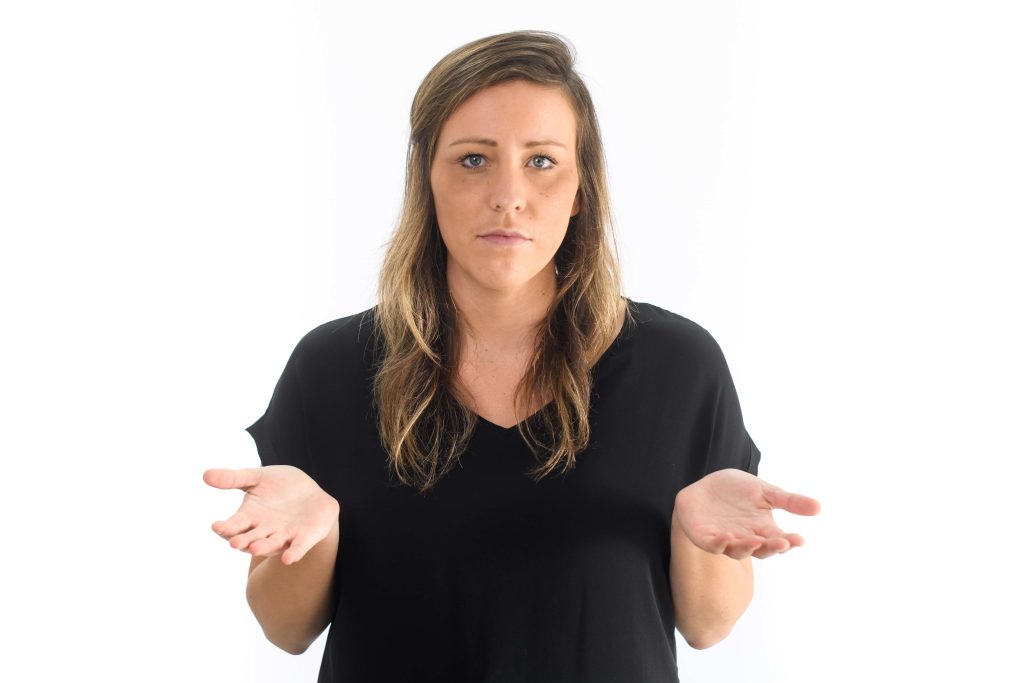
OPEN PALMS
Type: Gesture
Description: When using hand gestures, make sure you display your palms and don’t hide them from others. Pockets, hands behind back, and closed fists can all act as barriers against open palms.
What it Means: People who display open palms are seen as honest and sincere:
And have you ever been in a situation where you met someone, and they seem nice, but something inside you felt a bit… off? It might have been that their palms weren’t showing.
Evolutionarily, when we see closed palms, our brains receive signals that we might be in danger—after all, they could be brandishing a weapon or hiding something even more dangerous…
How to Use it: When gesturing with your hands, make sure your hands are open most of the time and people can see your open palms. It is also a good idea to keep the palms facing upward most of the time, rather than downward.
↑ Table of Contents ↑
Closed Body Language Examples
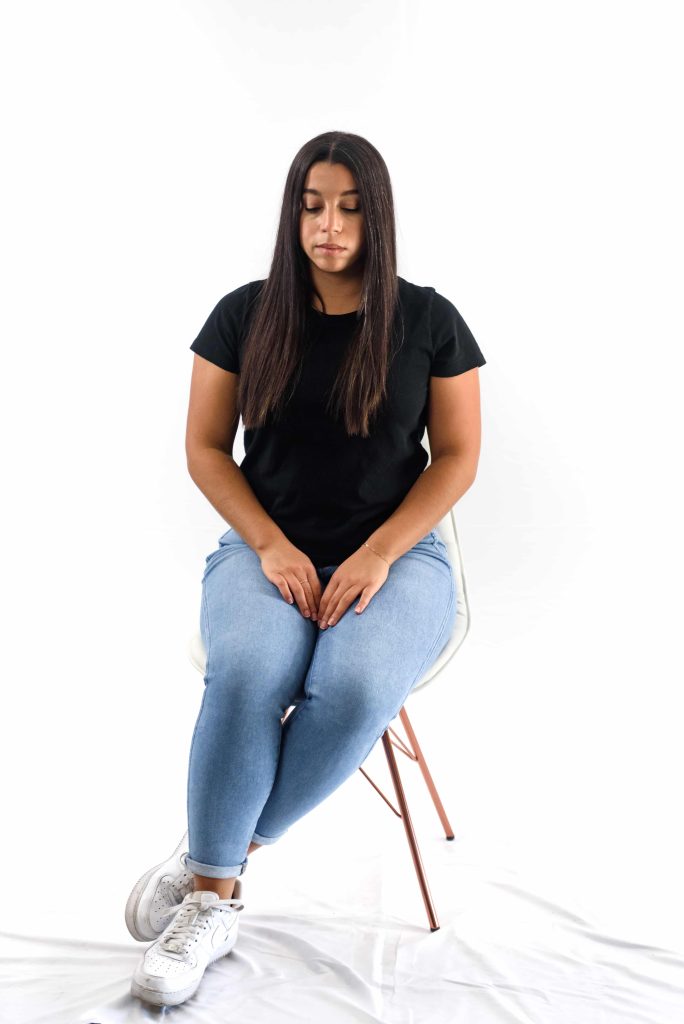
CROSSED ANKLES
Description: The feet are crossed, and one ankle lies on top of the other. This can be done whether sitting or standing—or even with the feet on the table.
What it Means: A person crossing their ankles might feel uncomfortable and closed-off, although there is an exception (I’ll talk about that below). The tighter their ankles are locked, the more anxiety or stress the person may be experiencing.
Women often sit with their ankles locked2, especially if they are wearing a skirt. However, it is unnatural to sit like this for a prolonged period of time and should be considered strange, especially if done by males.
When taken a step further, people may lock their feet around the legs of a chair under high-stress situations. I call this the “ejection seat” position, because it’s something many people would do if they were about to be launched out of their seat:
The big exception to this rule is if you see the ankles crossed while legs are outstretched on the floor. This can be a relaxed posture with the legs taking up space:
The Science: In a study of 319 dental patients by the Peases1, ankle locking was a common body language cue done by most patients: 68% of patients getting a checkup locked their ankles, 89% of patients locked their ankles as soon as they sat in their chair to get some dental work done, and a whopping 98% of them ankle-locked when they received an injection.
It’s safe to say that these patients felt de-feeted during this situation!
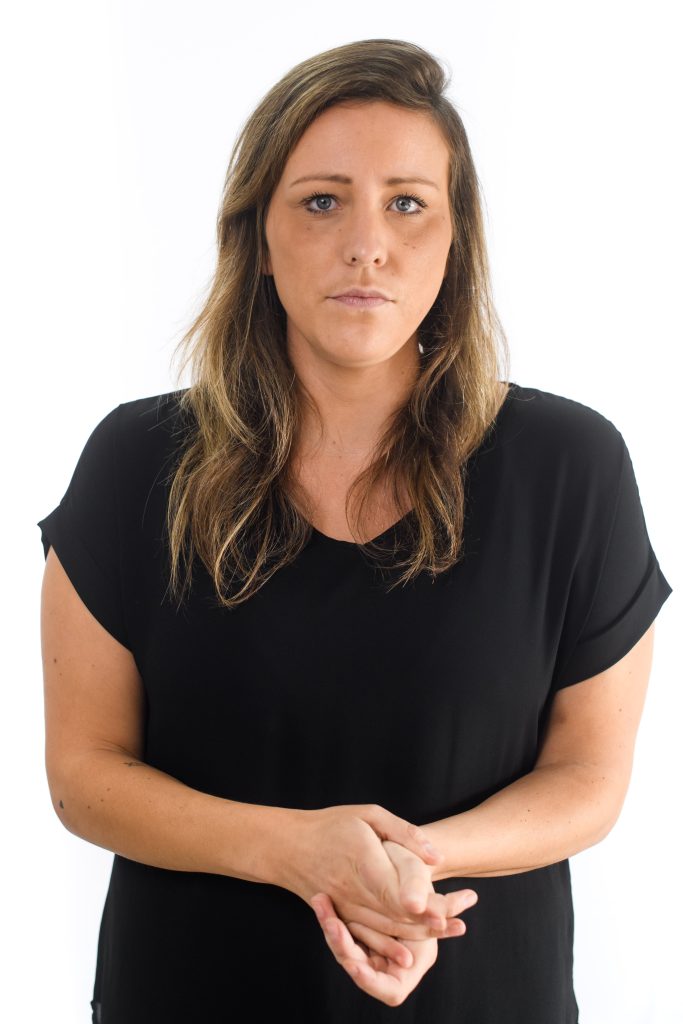
HAND CLASPING
Description: You know that affectionate, tender feeling of holding hands with a significant other?
Well, sometimes we don’t have that option (there’s no shame in that!). In these cases, we might choose to hold our own hand. Sometimes we interlace our fingers, and other times we hug one hand on top of the other.
Here’s an interesting fact: every time we interlock our fingers, one thumb is on top, and this is our dominant thumb4. For most people, it feels super weird if we switch thumbs and put our dominant one underneath!
What it Means: Interlaced fingers are a form of “self-hug.” Essentially, people who perform this gesture are comforting themselves with their hands, and it acts as a nostalgic reminder of the security we felt when holding hands with our parents as kids.
As adults, we do this when we’re insecure—you’ll find this during overly formal events or when meeting a nervous client at work.
How to Use it: Use this gesture if you want to conclude a meeting or end an interaction with someone. If you want to appear confident, you can even use this cue but with your thumbs stuck out—this signals confidence instead of stress.
If you see someone with interlaced fingers and want to open them up, try humor. Once they start laughing, you’ll see their body language start opening up!
Description: Have you ever seen a fencing bout before? These guys are on their feet, constantly moving back and forth in a game of who-can-stab-the-other-guy-first. It’s basically chess but with swords.
But the way that fencers use their stance is exactly what people do when closing off. When blading, the torso is turned away, maximizing reach in case violence occurs, while minimizing damage to the oh-so-vulnerable frontal parts.
Since up to 90% of people are right-handed, when you see blading, the left foot (which is also non-dominant in most cases) is usually the one that steps forward, or the right foot may step backward.
What it Means: Blading can commonly be seen right before a fight begins. You can see it before a bar fight breaks loose, during a boxing match, or if you made a statement your conversation partner disagrees with.
If you’re talking to a buddy in a front-to-front situation, and you see him blade all of a sudden, he might be feeling a bit defensive or threatened.
An exception to blading is when both people are observing an event and square up shoulder-to-shoulder, such as sitting on the couch and watching TV together.
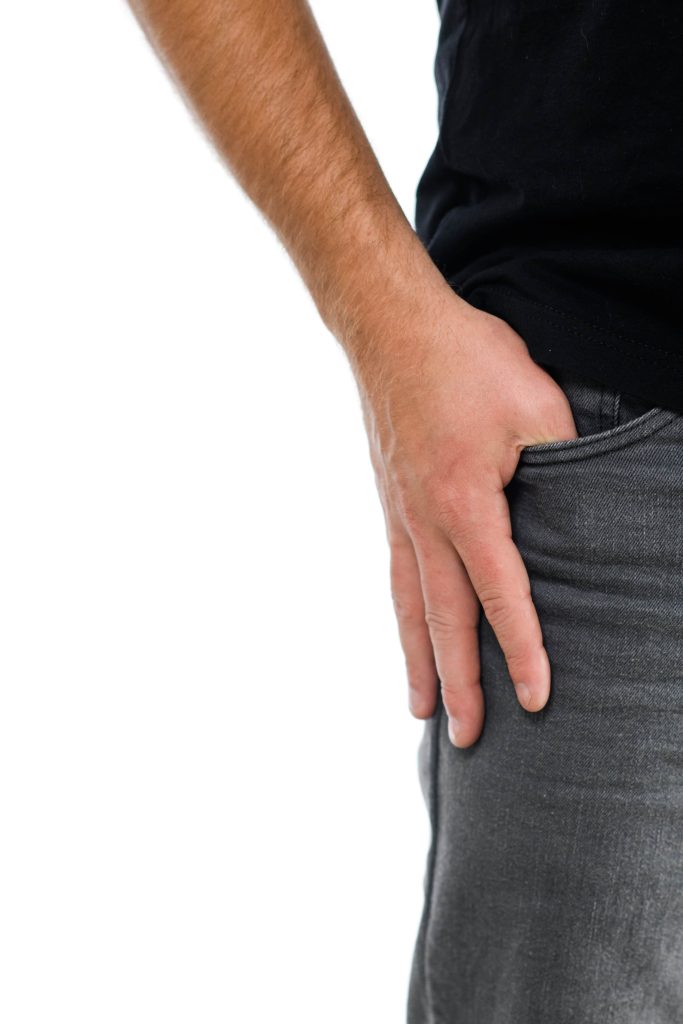
THUMBS HIDDEN
Description: The thumbs are hidden away from view, such as inside pockets or even wrapped around the other fingers.
What it Means: Usually a display of lower self-confidence, hiding thumbs usually signals concern, insecurity, or feelings of threat. High-status people have been observed to do this sometimes when relaxing2 but never when they’re “on.”
Dogs also perform a similar cue by hiding their ears during times of stress. They do this in order to streamline themselves in case they need to make a mad dash… like if they manage to bite a hole through your $50 doggy bed while you were out dining with your partner (oddly specific?).
How to Use it: Around close friends and trusted others, it’s totally fine to relax your hands in your pockets once in a while. But if you want to make the other person feel a bit insecure for whatever reason, sticking your hands deep in your pockets is a surefire way to do it!
Pop Quiz: Thumbs Out
In the picture below, the person has their hands in their pockets, but their thumbs are sticking out. What does this likely indicate?
1. confidence
2. nervousness or anxiety
3. anticipation
4. fear
a) confidence. Even though the hands are inside the pockets, the big difference here is that the thumbs are sticking out. Thumbs are also the most powerful digits of your hand. When they are displayed confidently, this can often indicate confidence or power in a given situation.
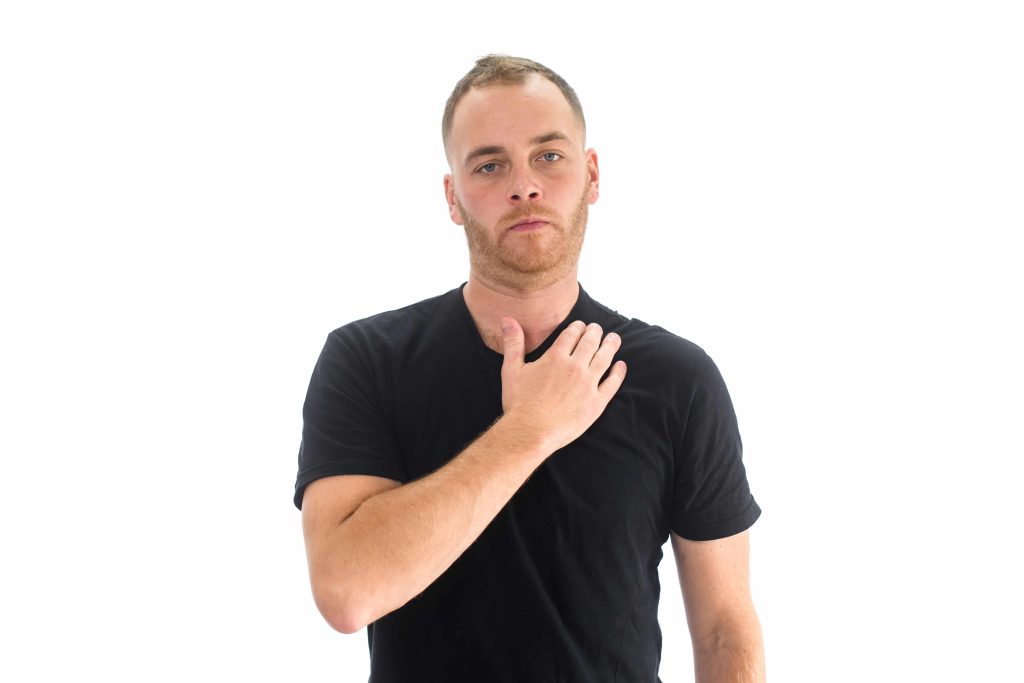
NECK RUBBING
Description: When people rub their necks, they’ll usually do it on the side or back of the neck. In more extreme cases, you’ll see the suprasternal notch, or the part where your neck meets your clavicle, being touched (usually more in women).
What it Means: People usually rub their neck when feeling insecure or stressed. For some people, this is their go-to method to relieve stress.
Those who habitually rub the neck also have a tendency to be more negative or critical1 than others.
The Science: When the nerve on the side of the neck called the vagus nerve is massaged, acetylcholine, a neurotransmitter that sends signals to the heart, causes the heart rate to go down.
A Deadly Example:
Warning:
This example contains graphic content.
In the formal interview of a Canadian-born Chinese-Vietnamese woman named Jennifer Pan, she told detectives that her parents were murdered in her house by 3 unknown thugs.
However, the interview officially turned into an interrogation when the detectives became suspicious. They noticed her story didn’t line up, and the nonverbal cues she displayed weren’t quite normal for her situation. It turns out that she actually staged the murder herself, and she was faking her story the entire time!
One nonverbal cue she consistently displayed that signaled high stress was touching her suprasternal notch:
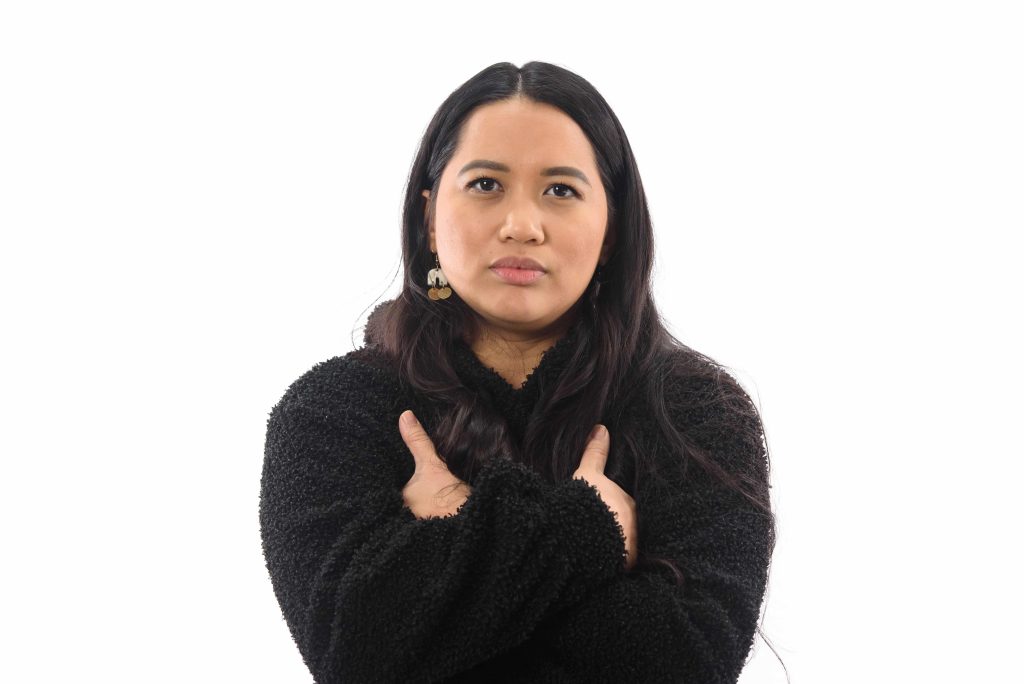
CROSSED ARMS
Description: Chances are, you know this one. Practically everyone has crossed their arms at some point or another.
What it Means: Most people who do this are projecting anger, anxiety, or stress—it’s also known as the “self-hug”2.
That’s why people will usually cross their arms only in public and not when alone. You’ll see it often in public, such as in line at the DMV, in doctors’ and dentists’ waiting rooms, or with first-time air travelers1.
People who are feeling angry, hostile, or defensive may clench their fists and even combine this gesture with a tight-lipped smile or clenched teeth1.
The Science: Research on over 1,500 volunteers was conducted by the Peases1 to find out exactly how the crossed-arms gesture made people feel. The volunteers, asked to attend a series of lectures, were divided into 2 groups:
- One group was asked to keep their legs uncrossed, arms unfolded, and take a relaxed sitting position.
- The second group did the same, except they were asked to cross their arms throughout the lectures.
The result? The second group learned and retained 38% less information than the group with unfolded arms. They also gave more critical opinions of the lecturers and the lecturer.
How to Disarm it: If you see someone with this gesture, you can break their barrier by giving them something to hold onto1—a pen, book, coffee, or brochure will work just fine. You can also ask them to lean forward to look at something to open their arms up.
Example: Right before a tug-of-war competition, most of the men on a tug-of-war team face off against 4 big Strongman competitors. Their crossed arms are a dead giveaway that they’re feeling tension from the upcoming struggle:
How Do You Cross
Here’s a simple self-test you can do right now: cross your arms. Now let me take a guess… Did you cross your left arm over your right one?
Research has found that 7 out of 10 people cross their left arm over their right arm1. This implies that this gesture might be genetic, with the less dominant left arm protecting the more useful right one. If you try crossing your arms the other way, you might be surprised that it feels completely wrong!
And we all cross differently. Take a look at the chart below and see a handful of the quirky ways we tend to cross our arms!
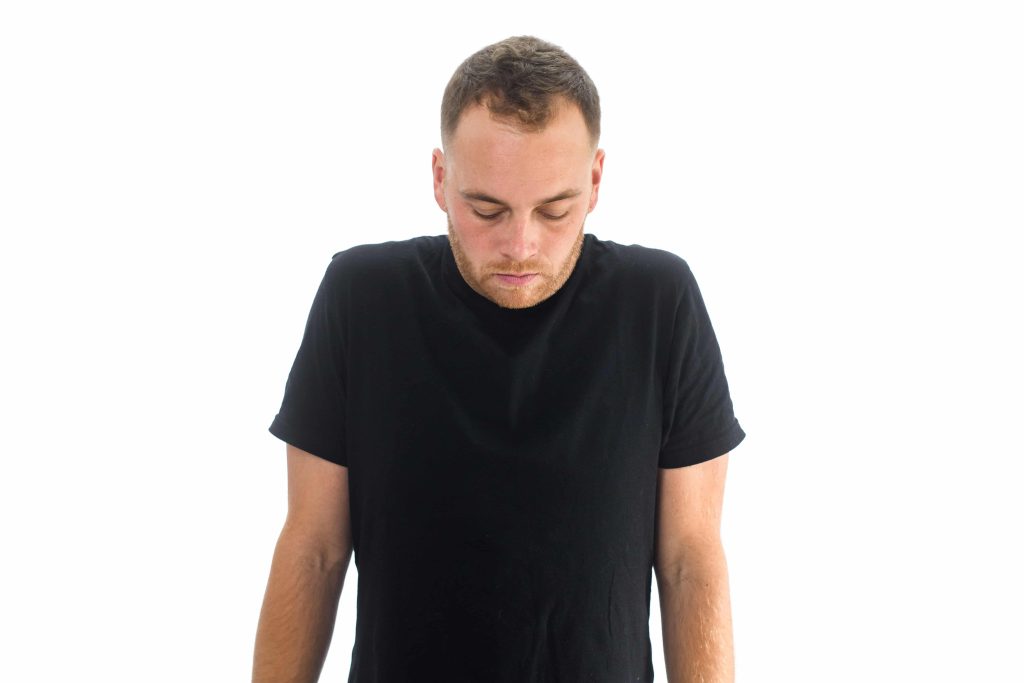
HUNCHED SHOULDERS
Description: How many times have you heard “shoulders back, head straight!”
Believe it or not, hunched shoulders are becoming even more common nowadays, as you’ll see people slumped over, looking at their cellphones. Over time, this might even become the norm, as people develop chronically-hunched shoulders from staring at smartphones and hunched over laptops all day.
We may all literally end up like the Hunchback of Notre Dame:
All kidding aside, people who are super submissive in social situations, like those with clinical depression or self-proclaimed “social failures,” may also walk with a permanent stoop, with shoulders rounded and their neck hunched forward.
Meaning: This is a naturally defensive posture. Forward shoulders may indicate that someone is trying to hide something or feeling vulnerable, since you are closing off your vulnerable neck and chest areas.
You’ll also rarely see this in fashion shows and magazines, as it instantly drops your attraction value. This cue literally reminds me of a turtle withdrawing into its shell:
Perhaps a better name for this cue would be “turtling!”
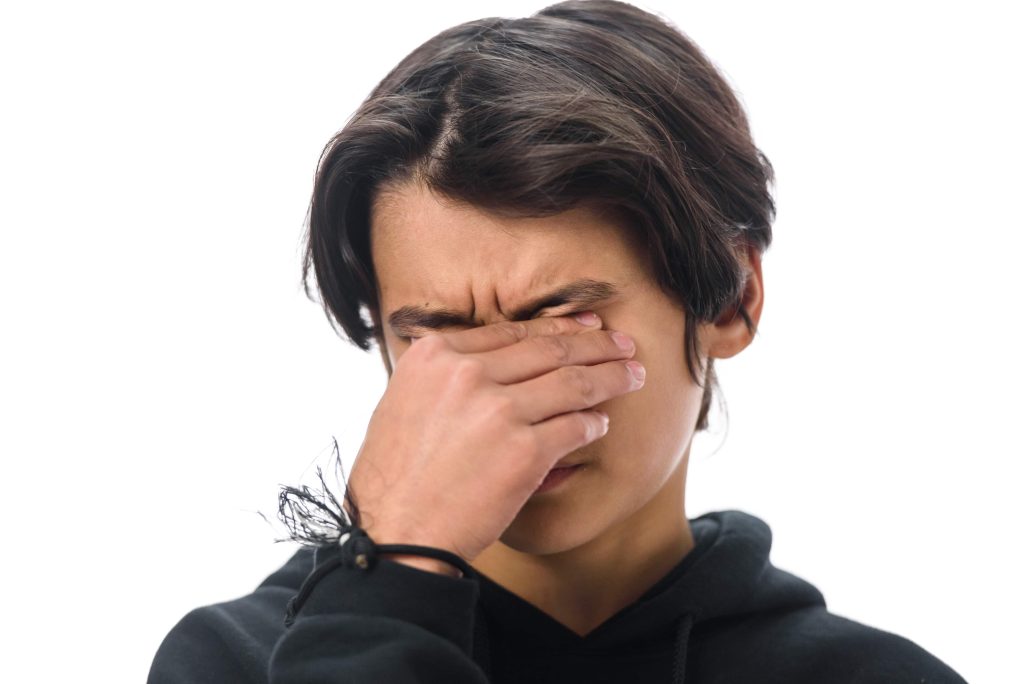
RUBBING EYES
Type: Pacifying
Description: People who rub their eyes usually use their index finger, middle, or thumb to get in on that eyelid action. It can range either from a gentle, split-second touch, to more obvious rubbing, to a very obvious, angry, it’s-raw type of face/eye rubbing:
What it Means: Rubbing the eyelids really helps people calm down, as it acts like a “visual reset.” Essentially, what you’re saying when you rub your eyes is: “Look, please go away. I wish everything in front of me just “vanished.” You’ll typically see this gesture with high-stakes poker players as soon as they lose a hand, or during an argument between an angry and frustrated couple.
Of course, people naturally do this to get those nasty eye boogies out, too, so always take into account how tired someone is, before placing a negative label on them.
The Science: Rubbing the eyelids stimulates a special nerve in the eyelids called the vagus nerve, which helps slow down heart and breathing rates when it’s massaged.
You can also see people do this during conversations and interrogations when they are asked a difficult or stress-inducing question, and if they want to cut off eye contact to reduce their own stress or anxiety.
You may often see this gesture more in men than women, as women might be conditioned to avoid rubbing their eyes, especially if they wear eye makeup.
How to Use It: Having a hard day at work? Try closing your eyes in a safe space and gently rubbing your eyelids while taking a breath. I’ve found just 30 seconds of this helps immensely and gives a sense of calm during a stressful day.
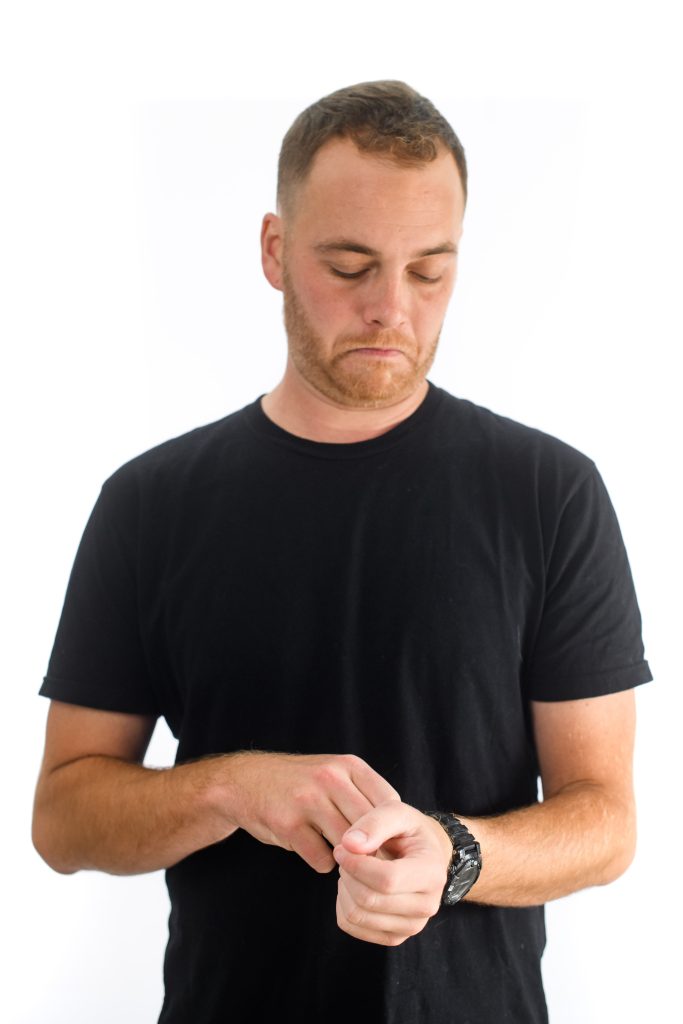
FIDGETING WITH OBJECTS
Description: Fidgeting involves playing with nearby objects, such as keys, coins, a pen, a ring, or a necklace.
What it Means: Fidgeting typically signals boredom. Bored of talking, bored of sitting down, and yes—even bored of you (ouch!).
People who fidget may be subconsciously desiring sensory reassurance, similar to how babies hold onto their favorite toy. Other times, it may mean that people are anxious or short on time—and in some cases, even disappointed (Robert Herzegovina definitely knows about that):
Yes, people even fidget with their fingers!
The Science: Observations at railway stations and airports revealed that there are 10x as many displacement activities in flying situations. In other words, people fidget a lot when they’re about to fly. These behaviors include:
- checking tickets
- taking out passports and putting them away
- rearranging hand baggage
- making sure their wallet is in place
- dropping things and picking them up
In contrast, only 8% of people boarding a train showed signs of fidgeting, compared to 80% of people at a check-in desk of a jumbo-jet flight across the Atlantic4.
How to Use it: If you want an easy out to a conversation, just start jangling your keys or coins in your pocket or hands. It might be a bit rude, but if you’ve really gotta go, this is a great way to end a conversation.
Historic Example: In 1969, when Elvis Presley made his first public stage appearance in 9 years, he displayed signs of fidgeting. What do you think he was feeling, judging by this picture?
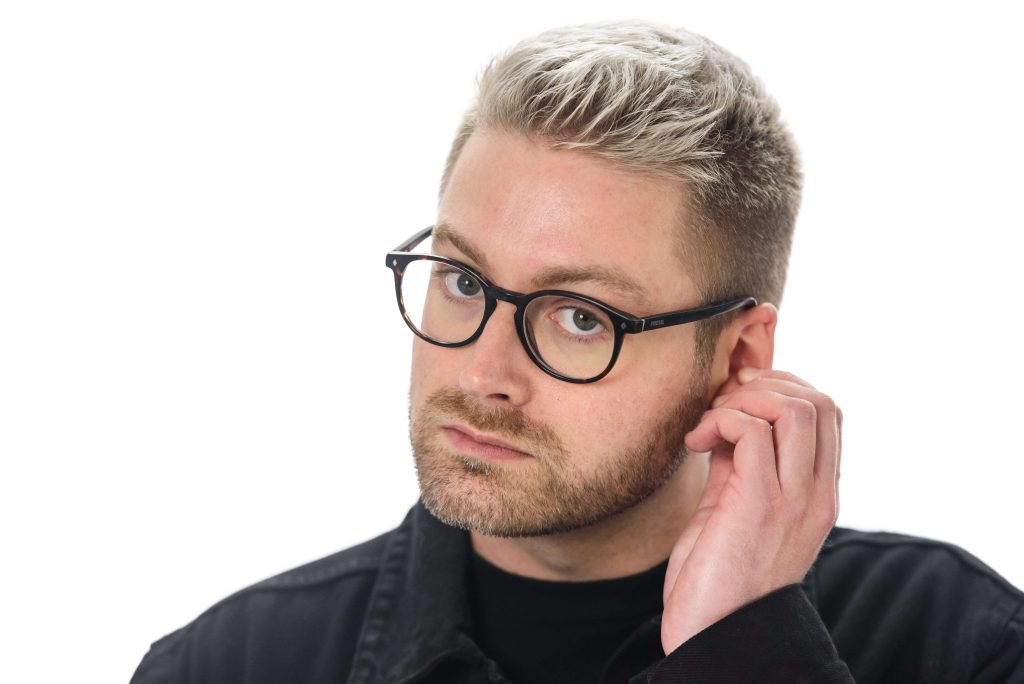
TOUCHING EARS
Description: The ear is rubbed, pulled, scratched, touched, picked at… or rubbed vigorously.
What it Means: OK, you might have noticed a trend by now—touching yourself basically means anxiety. Not in all cases, but unless you’ve just got an itch that won’t go away, repetitive self-touch in all forms is a way to ease tension throughout your body.
People generally scratch behind their ears, says Dutch biologist Nikolaas Tinbergen, as a way to ease tension during stressful situations. Such as when you’ve made a public speaking blunder in front of thousands of people.
Effectively, people who do this may be trying to “block” information that they’ve just heard—whether it’s a prodding question, or even if they’ve been accused.
Example: You may be familiar with the American actress Carol Burnett, who was famous for tugging on her left ear. She did this at the end of each show to let her grandmother know she was doing well and loved her. After her grandmother’s passing, she continued tugging her ear as a tradition and in memory of her.
See No Evil, Hear No Evil, Speak No Evil
Have you heard of the old Japanese maxim of the Three Wise Monkeys? You know, the picture of the three monkeys covering their eyes, ears, and mouth?
It turns out this picture is a GREAT example for explaining many blocking behaviors. Generally, touching the eyes, ears, or mouth are unconscious ways that people try to block out information… or prevent it from escaping—which is why you’ll often see these cues during intense interrogation sessions!
↑ Table of Contents ↑
What Are the 11 Types of Body Language?
Besides open and closed, body language can be further broken down into 11 different channels, including facial expressions, body proxemics, and ornaments.
↑ Table of Contents ↑
Facial Expressions
Researcher Dr. Paul Ekman discovered 7 universal microexpressions—or short facial gestures every human makes when they feel an intense emotion. We are very drawn to looking at and observing the face to understand someone’s hidden emotions.
↑ Table of Contents ↑
Body Proxemics
Proxemics is a term for how our body moves in space. We are constantly looking at how someone is moving—are they gesturing? Leaning? Moving toward or away from us? Body movements tell us a lot about preferences and nervousness.
↑ Table of Contents ↑
Gestures
The most common gestures are hand gestures. We often use our hands to express our emotions, tell a story, or comfort ourselves. My team even did an experiment on TED talks and found the most popular speakers also used the most hand gestures.
↑ Table of Contents ↑
Ornaments
Clothes, jewelry, sunglasses, and hairstyles are all extensions of our body language. Not only do certain colors and styles send signals to others, how we interact with our ornaments is also telling. Is someone a fidgeter with their watch or ring?
↑ Table of Contents ↑
Interest
Interest cues can be signs of attraction or general interest that usually don’t involve touch. From obvious cues like winking and smiling, to more subtle ones like a flick of the hair or displaying the wrist, knowing which cues to give and recognizing them is key to building rapport.
↑ Table of Contents ↑
Eye Gaze
Eye movements and changes tell us a lot about others’ intentions. During an interaction, we can often see changes such as longer eye gaze, sideways glances, and blocked eyes. These cues can indicate emotions like attraction, skepticism, or stress.
↑ Table of Contents ↑
Pacifying
Pacifying behaviors consist of a wide range of self-soothing behaviors that serve to calm us down after experiencing something unpleasant. This can be seen with fidgeting, bouncing feet, and arm rubbing. As a general rule of thumb, any repetitive behavior is likely pacifying.
↑ Table of Contents ↑
Haptics
Haptics refers to body language cues that involve touch. These include handshakes, touching another’s arm, hugs, a pat on the shoulder, and kissing. Since we interact with the world through touch, we can observe how others touch us to get an insight on their preferences.
↑ Table of Contents ↑
Blocking
Blocking cues are performed to magically “vanish” the cause of people’s stress or anxiety. Like the three wise monkeys—“see no evil, hear no evil, speak no evil”—these cues consist of barriers like touching the mouth or crossing the arms to block out the environment.
↑ Table of Contents ↑
Paralanguage
Paralanguage is the nonverbal communications of your voice, such as pitch, tone, and cadence. Often, we can hear how confident or anxious one feels by simply listening to their voice. By learning paralanguage, we can even master our own voices and give power to our words.
↑ Table of Contents ↑
Emblems
Emblems, or symbolic cues, represent messages that are consciously understood by others, and are often used in place of words. There are over 800 emblems, from your “OK” sign and “thumbs up,” and they are heavily dependent on a person’s culture and geographic location.
↑ Table of Contents ↑
Understanding & Interpreting body language
Body language isn’t just about seeing a body language cue. It’s also about interpretation and knowing what to look for. If you really want to take a deep dive into body language, check out the most advanced book on cues:
↑ Table of Contents ↑
Unlock the Secrets of Charisma
Control and leverage the tiny signals you’re sending—from your stance and facial expressions to your word choice and vocal tone—to improve your personal and professional relationships.
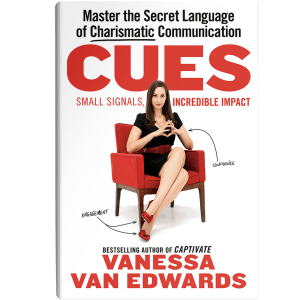
In the world of body language, there are 2 camps:
Absolutists believe that whenever a body language cue appears, it 100% has the interpreted meaning. For example, if a person crosses their arms, it means they are feeling blocked off in all cases.
Contextualists believe that body language depends on the situation. If a person crosses their arms, it could mean that they’re cold, or it’s simply more comfortable for them.
The key to understanding body language is to be a contextualist, not an absolutist. Learning about body language cues without knowing how to apply them may skew your opinions about others for the worse, rather than improving them for the better.
↑ Table of Contents ↑
Body Language Mini FAQ
Here are some other questions I’ve been asked about body language, which I’ve compiled into a mini FAQ:
Yes! Body language cues and their consistency have been scientifically proven time and time again by researchers such as Paul Ekman, Joe Navarro, Barbara and Allan Pease, Desmond Morris, and Carol Kinsey Goman. However, it’s important to note that everyone has their individual quirks that may be different from the norm.
No. While many cues are universal, such as the eyebrow flash and 7 facial microexpressions, many body language cues are specific to a culture or geographic location. For example, many Western cultures prefer a handshake as a greeting; however, some Spanish or Latin cultures may kiss, Thai culture often employs the “wai” greeting, and the Japanese may prefer to bow.
A nonverbal cue is anything that is done nonverbally during an interaction, such as a hand gesture or bodily movement. Many body language cues can be interpreted to reveal a person’s intentions or feelings during a situation.
When there is a mismatch between a person’s words and body language, it is generally preferred to rely on their body language for an accurate interpretation of their true feelings. Most people make a conscious effort to choose their words carefully; however, body language is much harder to consciously control and therefore more reliable in most cases.
Nonverbal communication is the broad term used to describe all types of communication without using words. Body language is a category of nonverbal communication that focuses on all parts of the body, such as facial expressions and gestures.
Absolutely! Many people, especially those who are new to reading body language, will make the mistake of attempting to read body language but get it wrong. They may read a certain body language cue and forget to take into consideration the context or environment. They may also read a cue but miss out on other, more important cues that signal the opposite of their interpretation.
Common body language cues that indicate lying are touching the nose, increased eye contact, licking the lips, uncertain vocal tonality, and a frozen posture. There are many lying cues that may indicate deception. However, there is no single cue that definitively means a person is lying.
It depends. Some people are naturally gifted at reading body language and can pick up on it readily. For others, it may take months in order to get a basic grasp of body language. The amount of time spent observing cues, a person’s perceptiveness, and the amount of training and research one does all affect a person’s body-language-reading abilities.
I hope this article has been useful to you! To continue the guide, please click on the next article link below.
To your success,
Vanessa
Crack The Code on Facial Expressions
The human face is constantly sending signals, and we use it to understand the person’s intentions when we speak to them.
In Decode, we dive deep into these microexpressions to teach you how to instantly pick up on them and understand the meaning behind what is said to you.
Don’t spend another day living in the dark.
Sources:
1 Pease, A. (2017). The definitive book of body language: How to read others’ attitudes by their gestures. London: Orion.
2 Navarro, J., & Karlins, M. (2015). What every BODY is saying: An ex-FBI agent’s guide to speed-reading people. New York, NY: Harper Collins.
3 Knapp, M. L., & Hall, J. A. (2014). Nonverbal communication in human interaction. Boston: Wadsworth Cengage Learning.
4 Morris, D. (2012). Peoplewatching: The Desmond Morris Guide to Body Language. London: Vintage Digital.
Side Note: As much as possible we tried to use academic research or expert opinion for this master body language guide. Occasionally, when we could not find research we include anecdotes that are helpful. As more research comes out on nonverbal behavior we will be sure to add it!

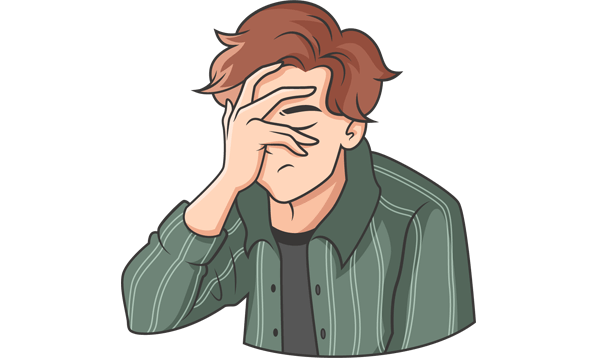






![Jennifer Lawrence @ The Ellen DeGeneres Show | Full interview [HD]](https://www.scienceofpeople.com/wp-content/cache/flying-press/www.scienceofpeople.com/frPxeO7JP90-hqdefault.jpg)
